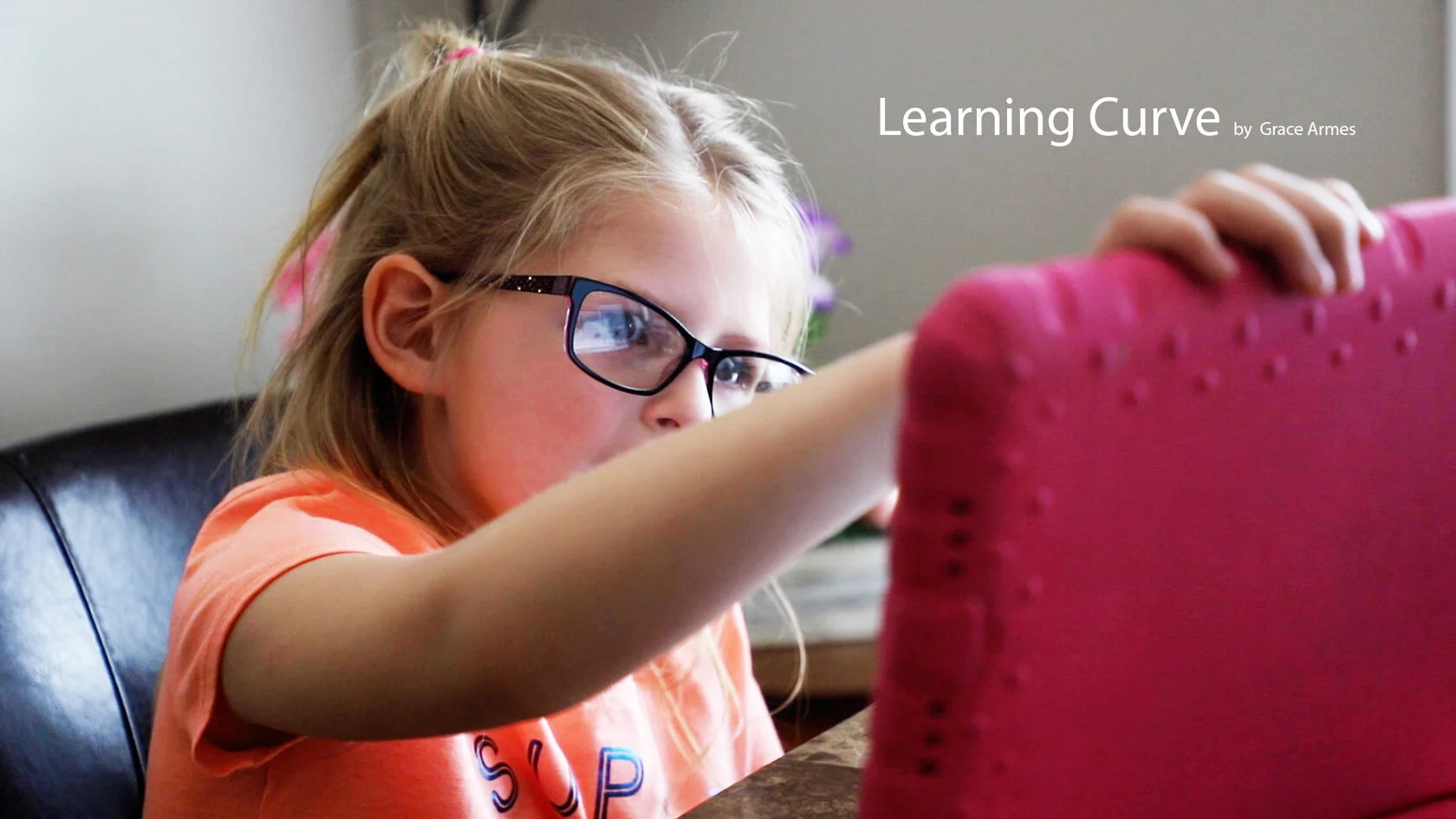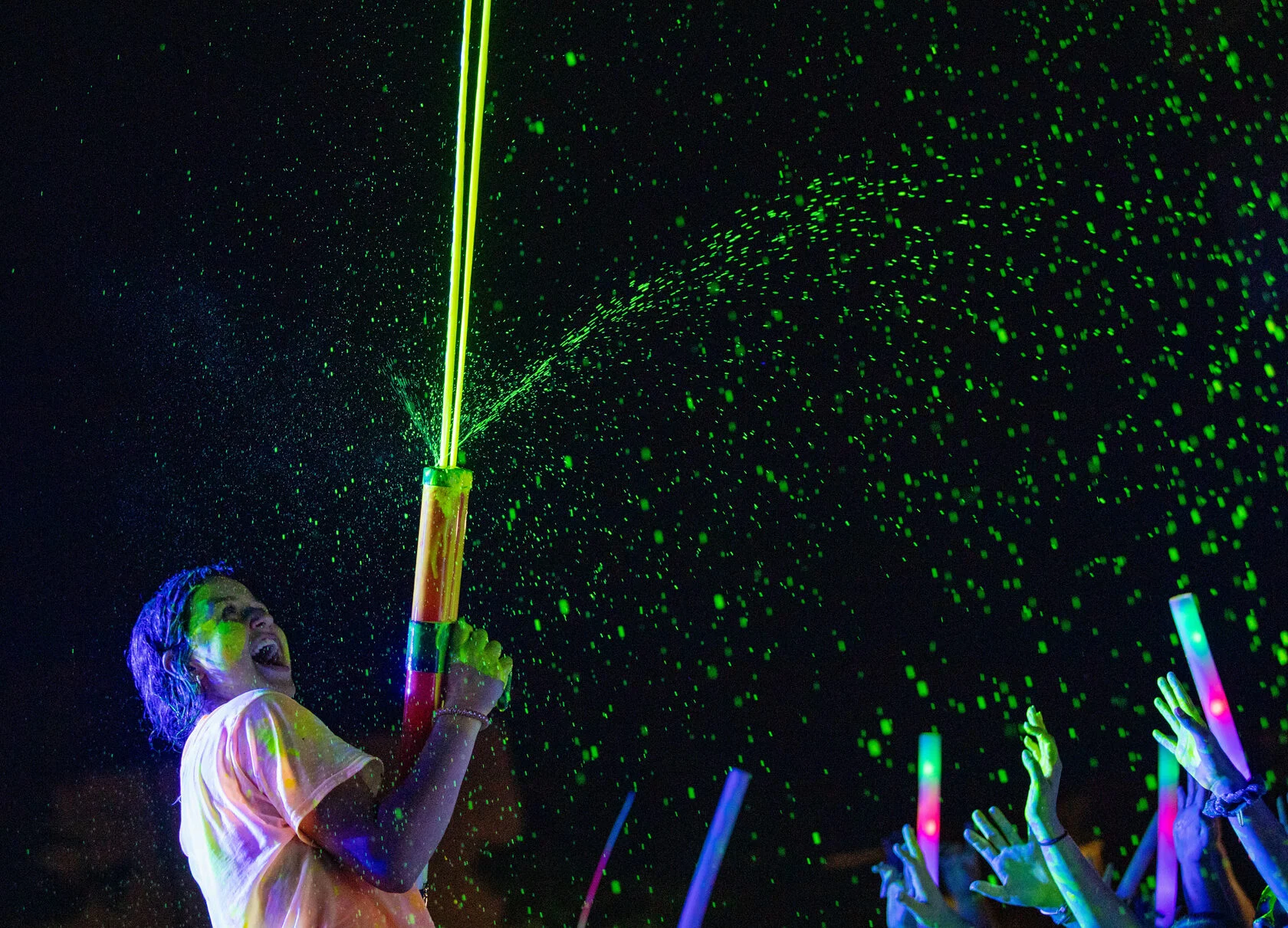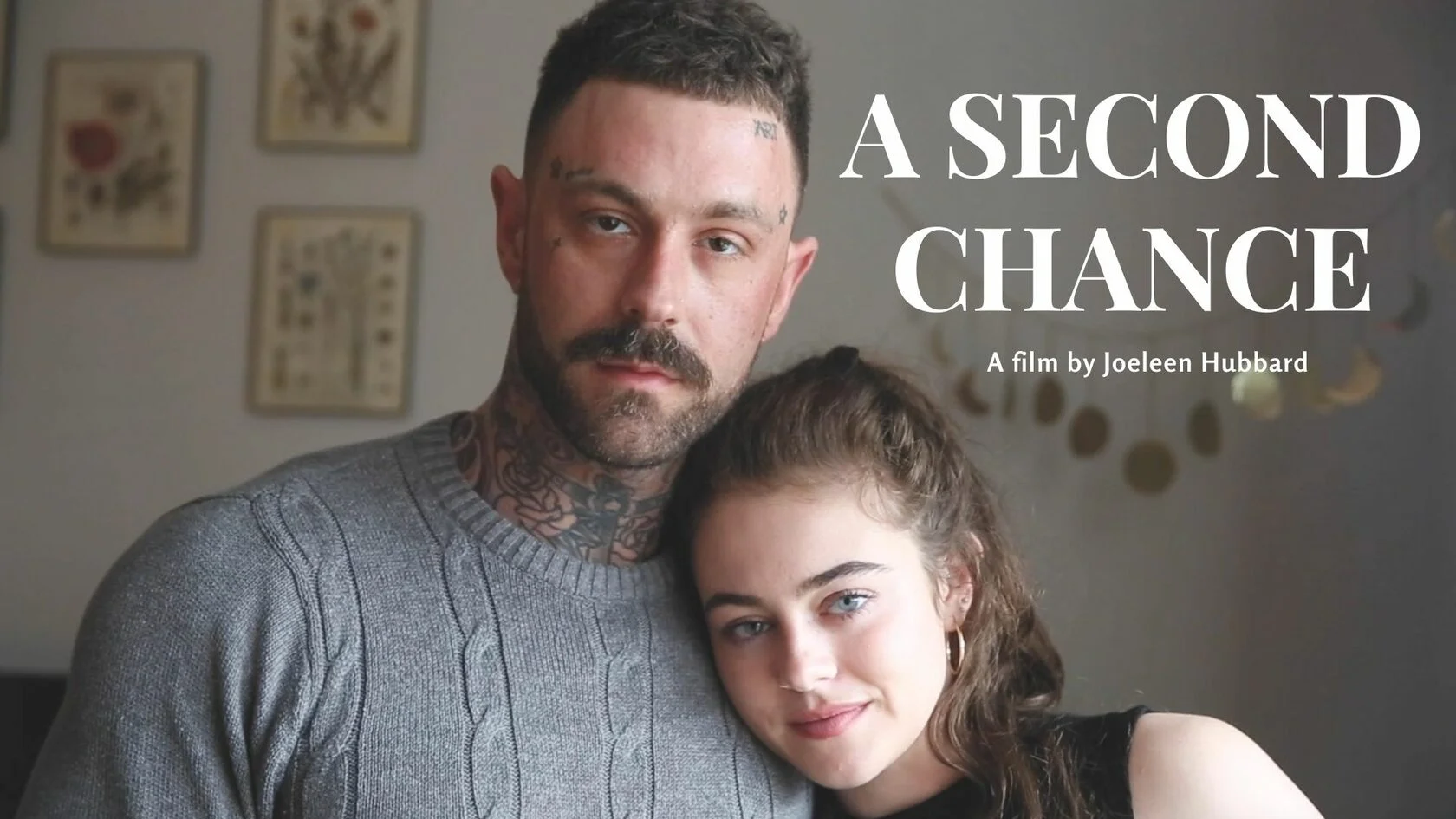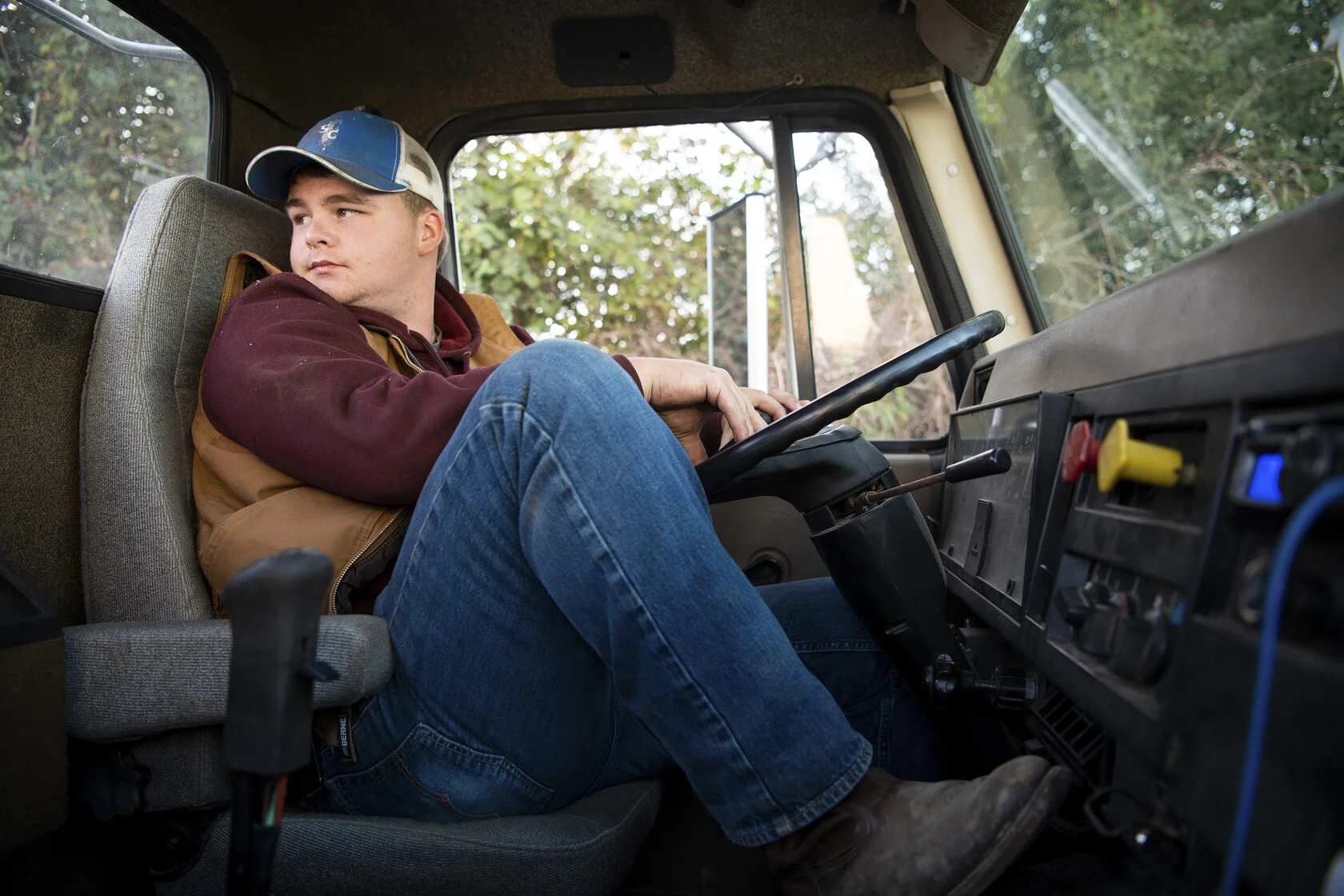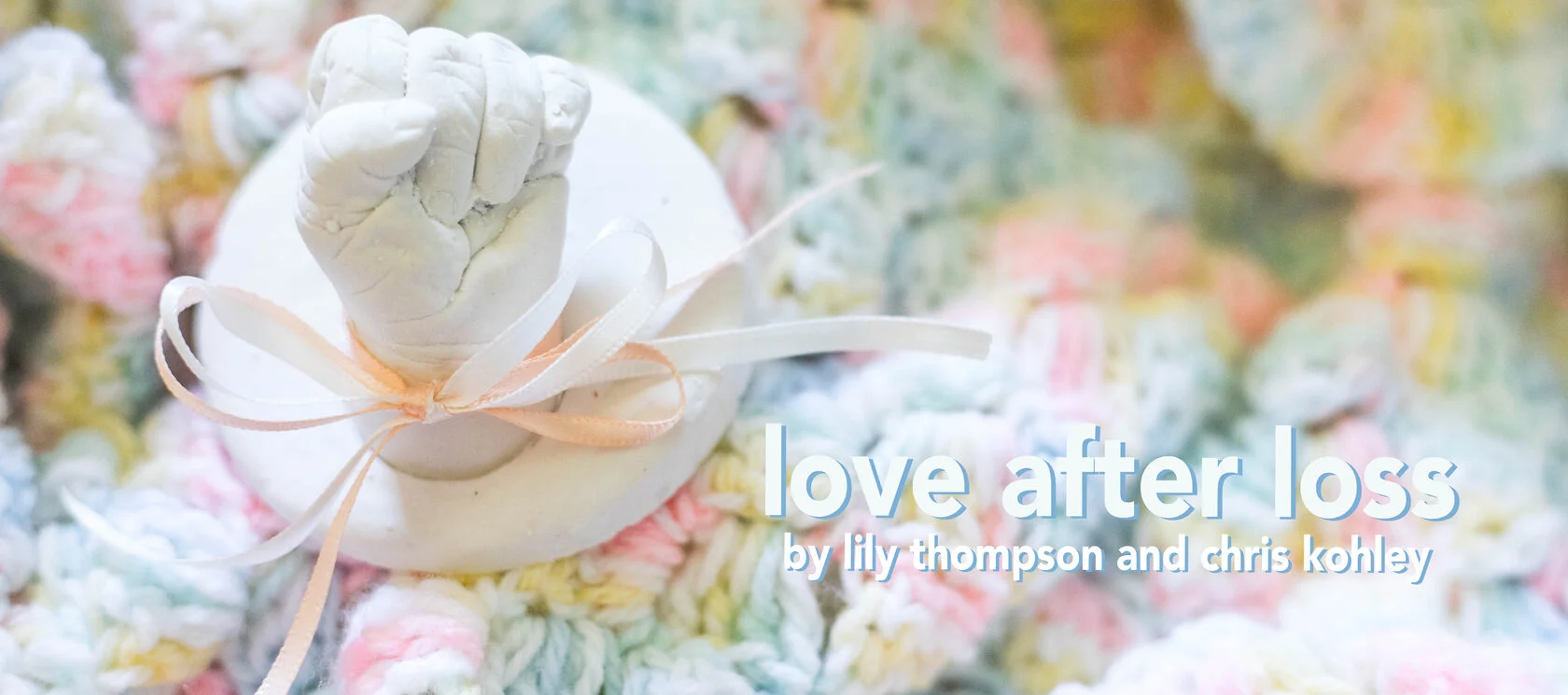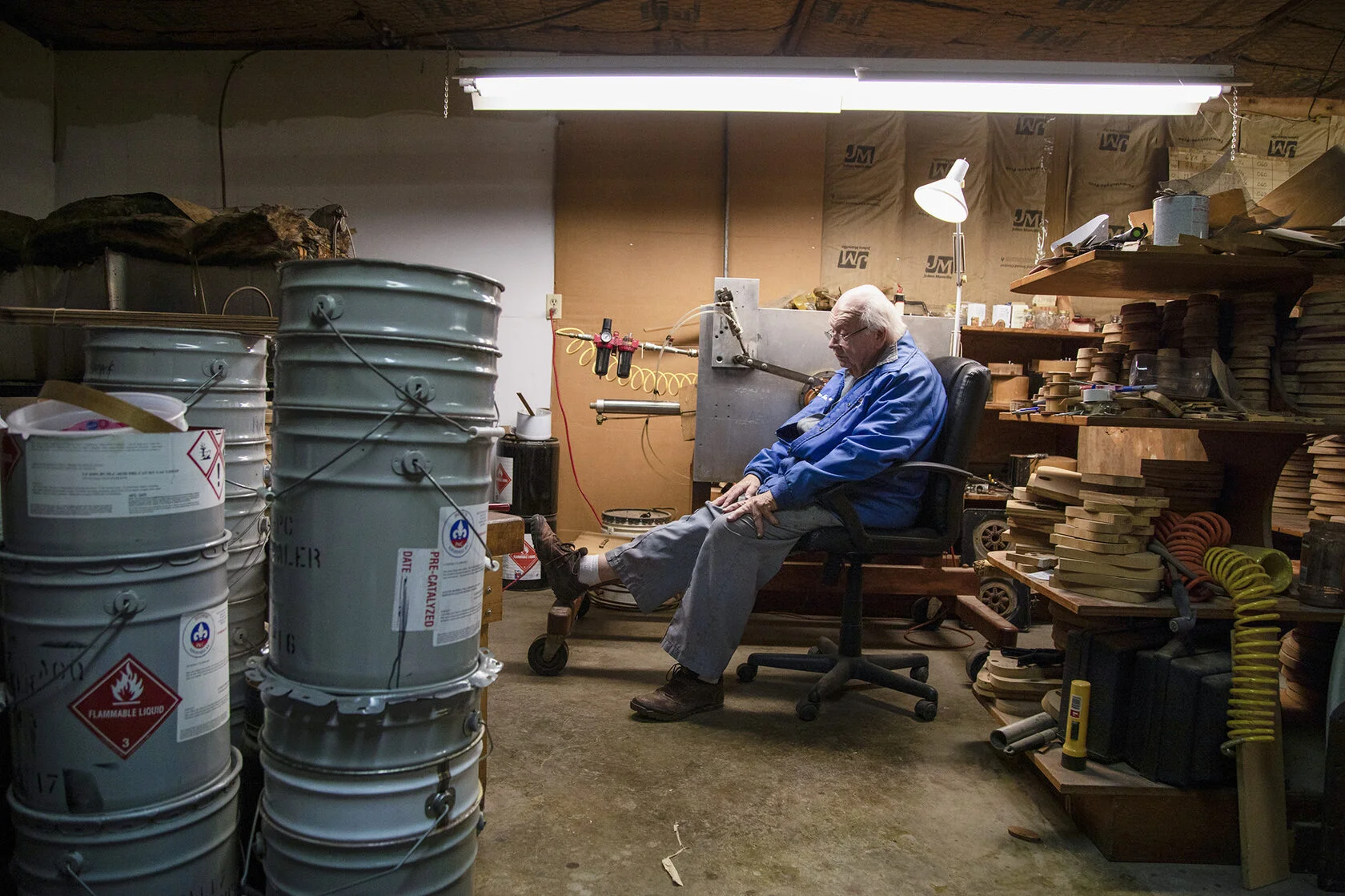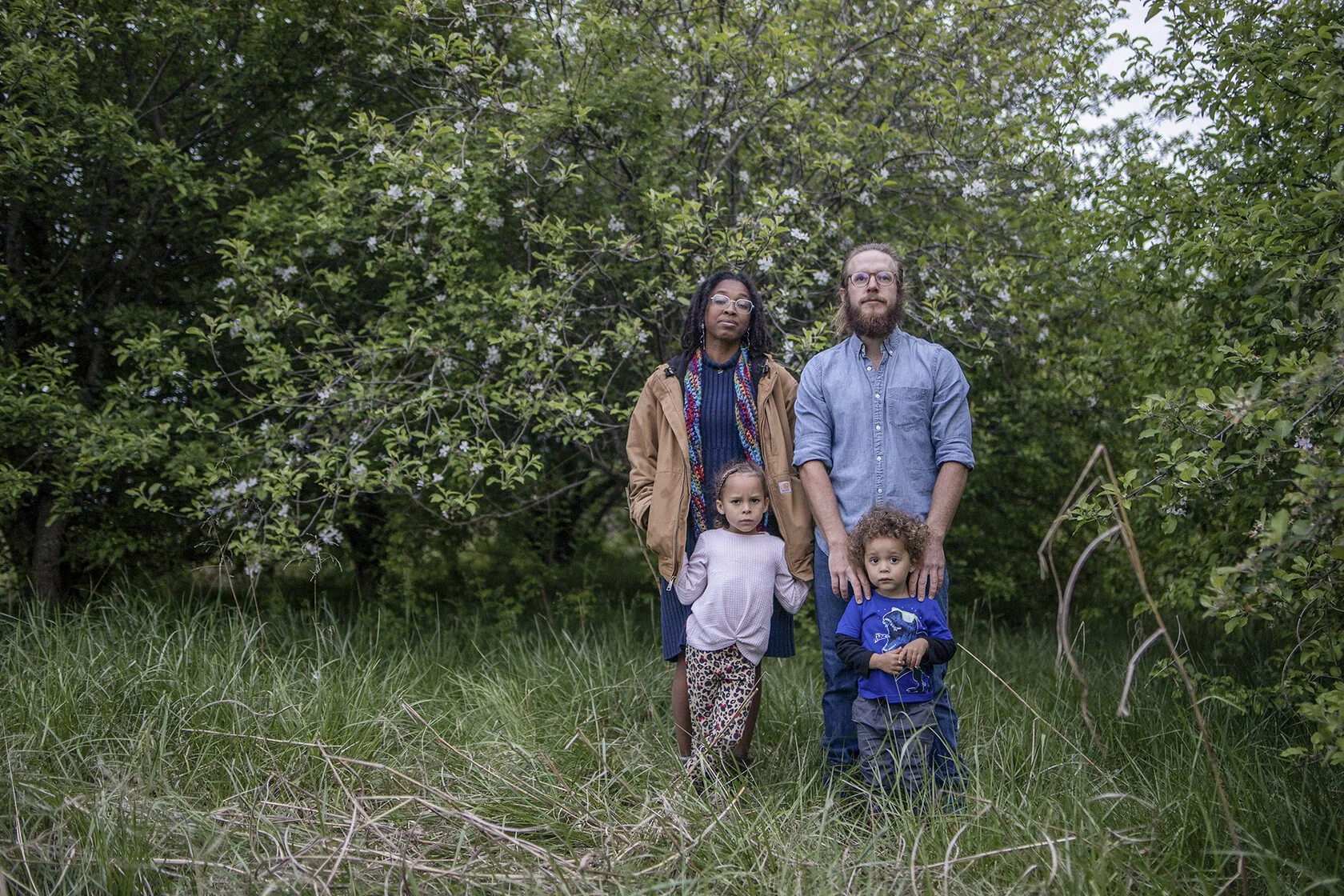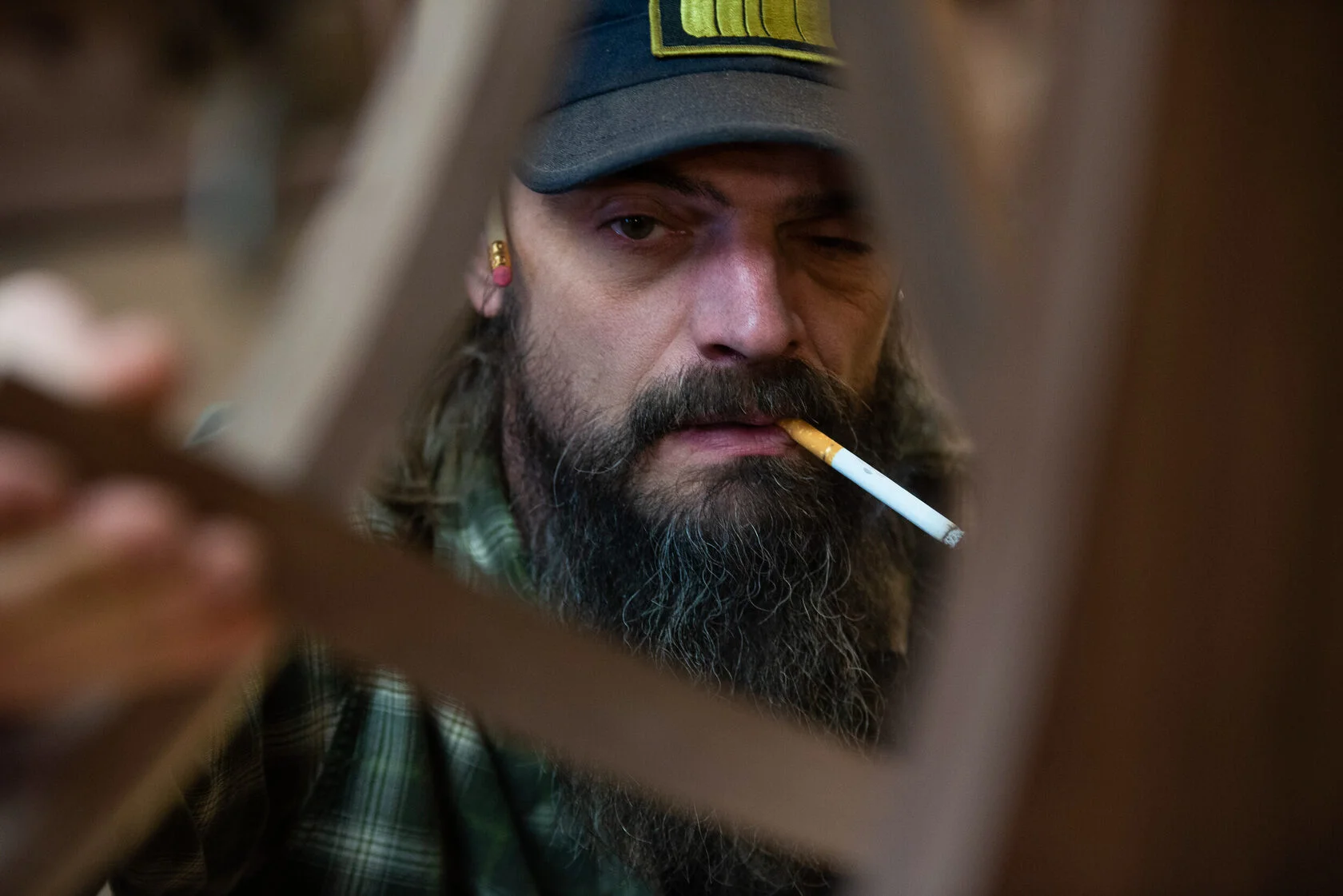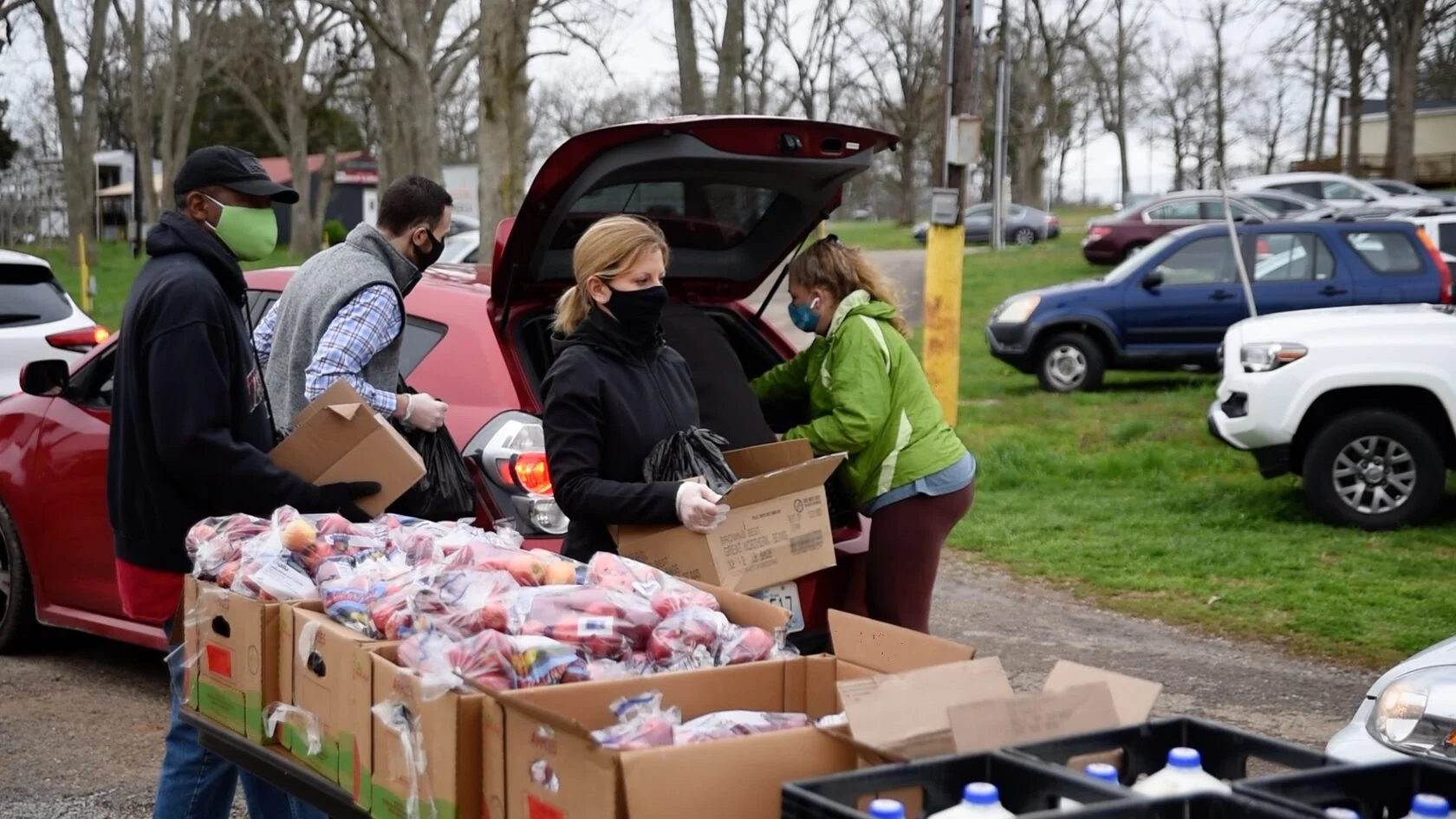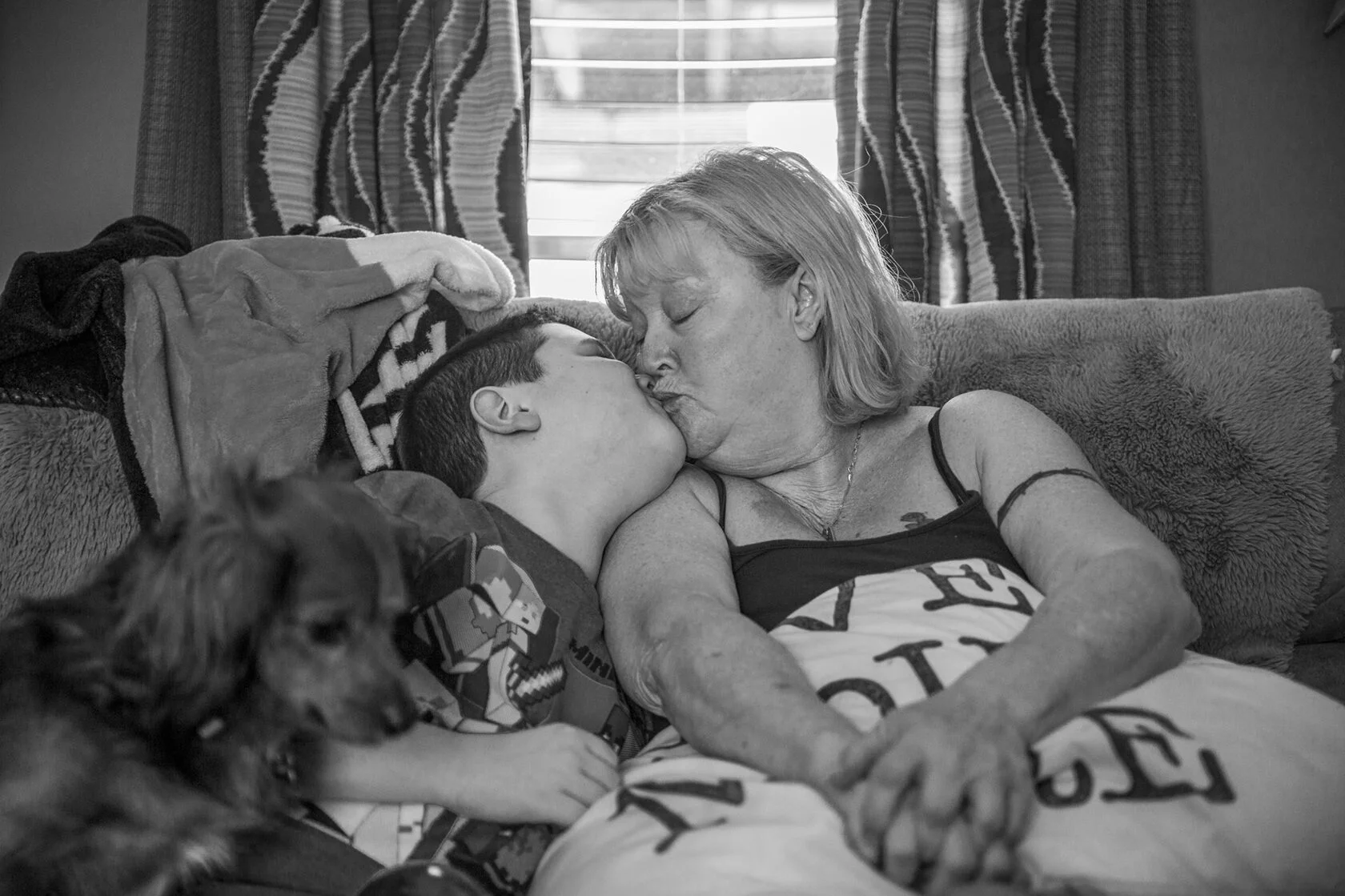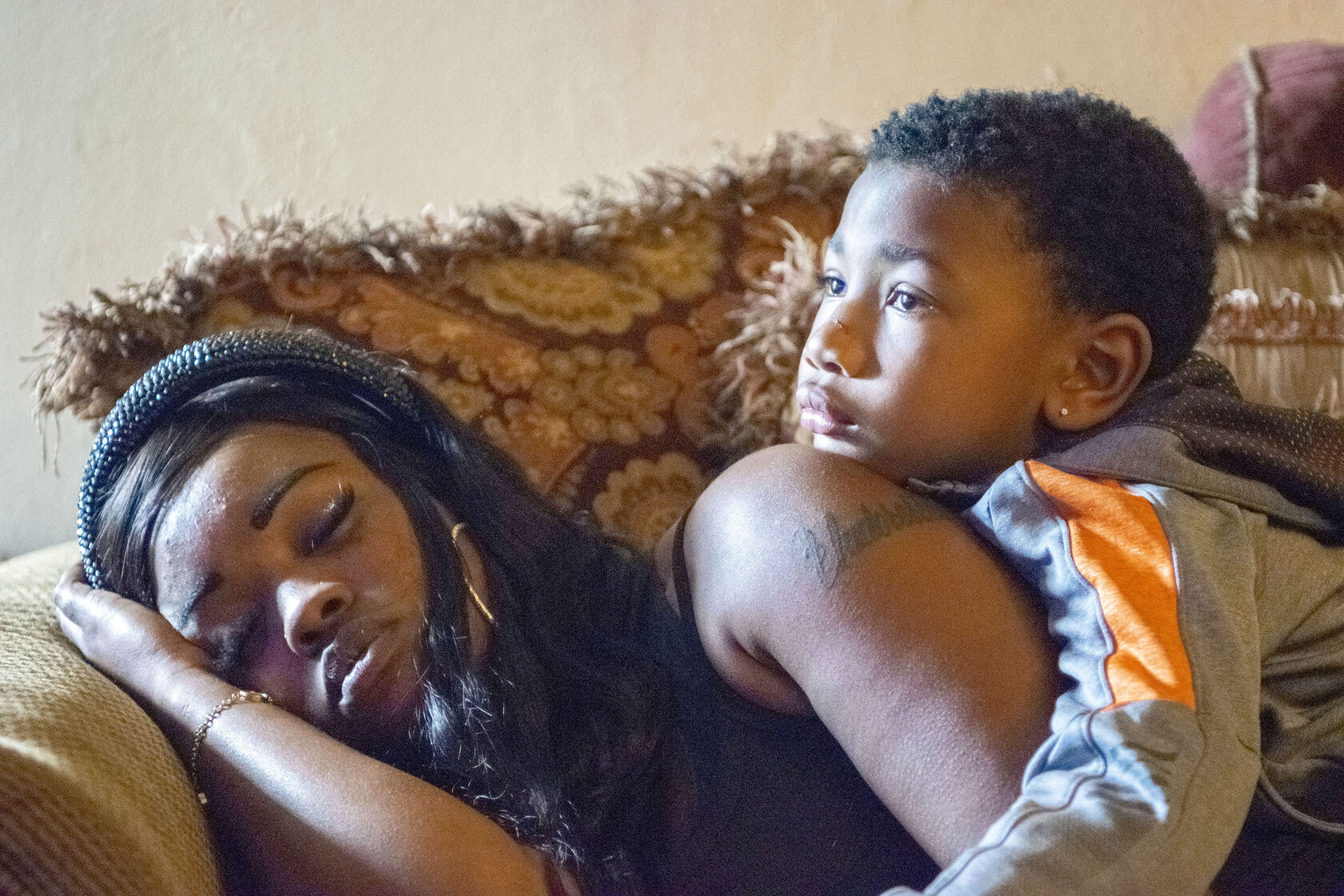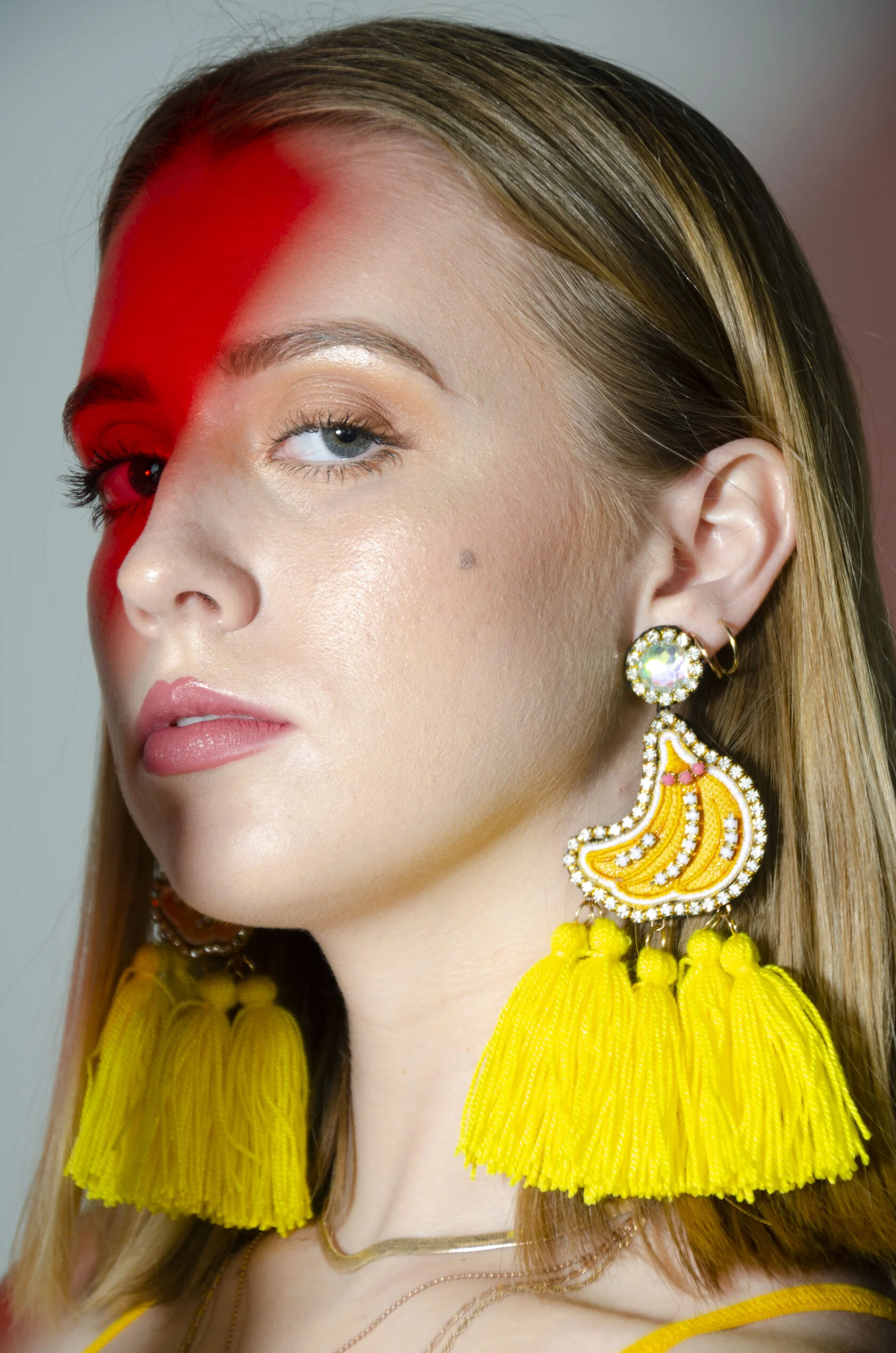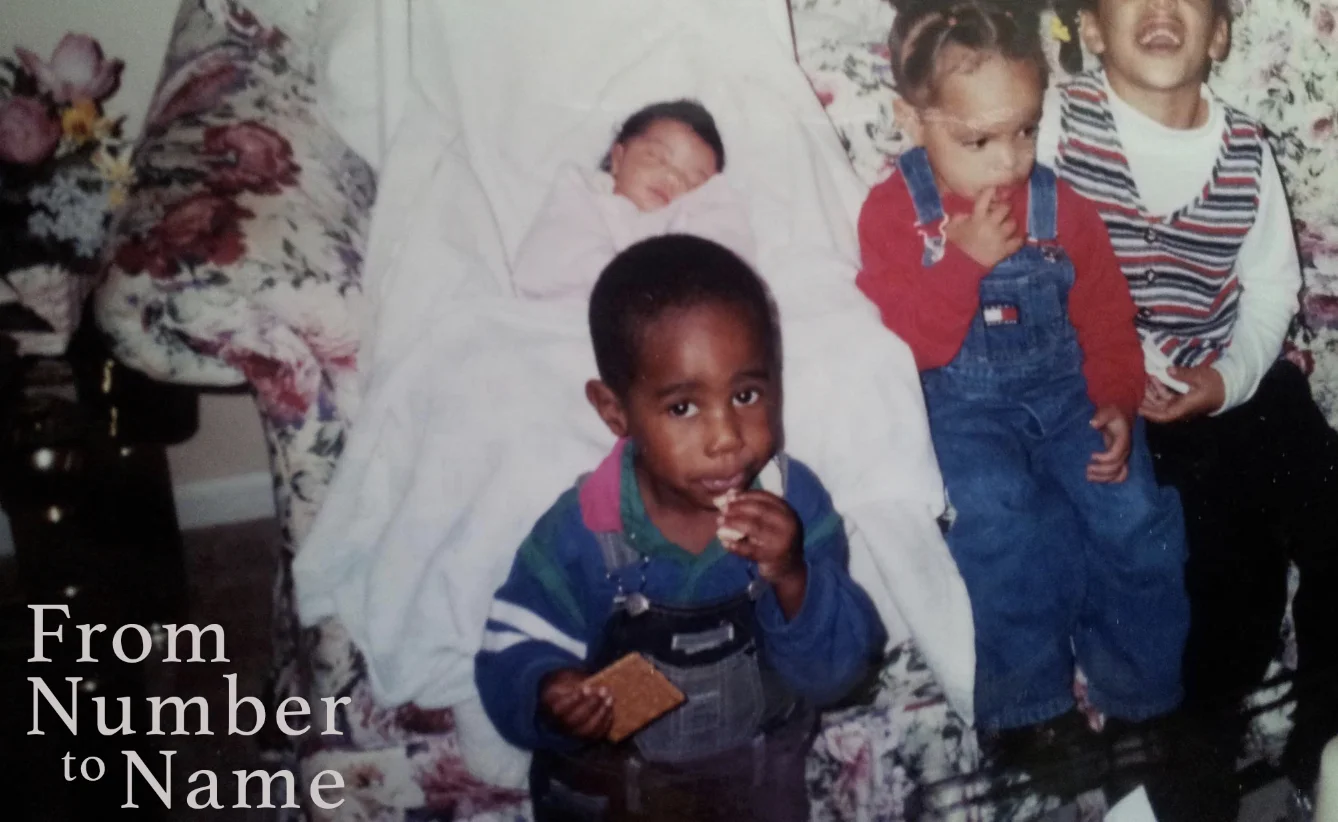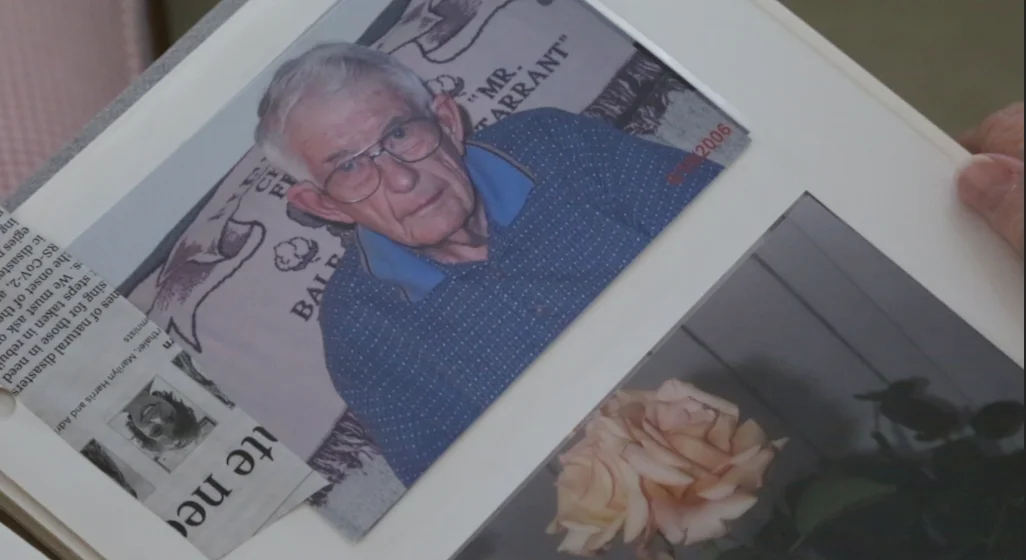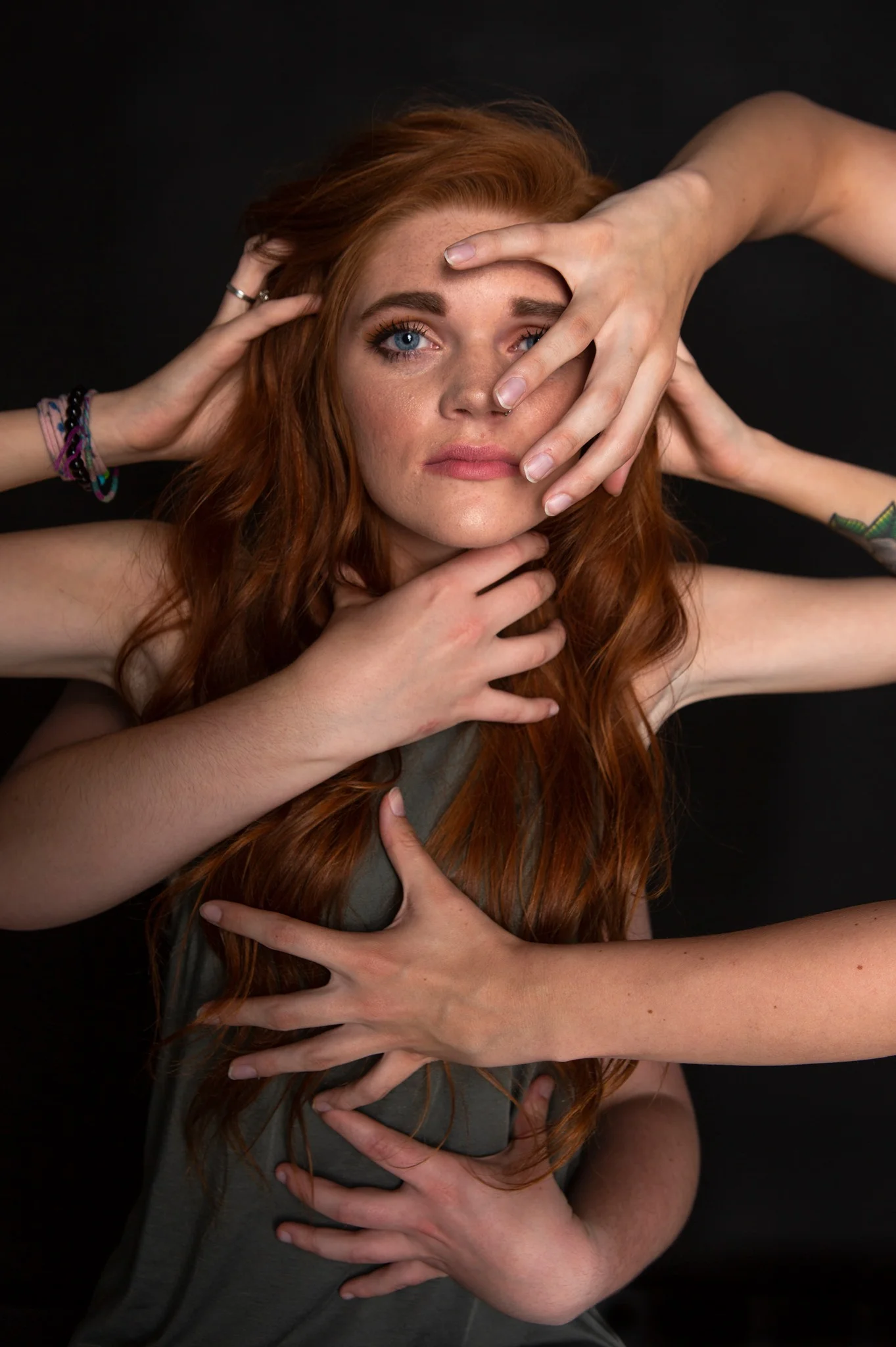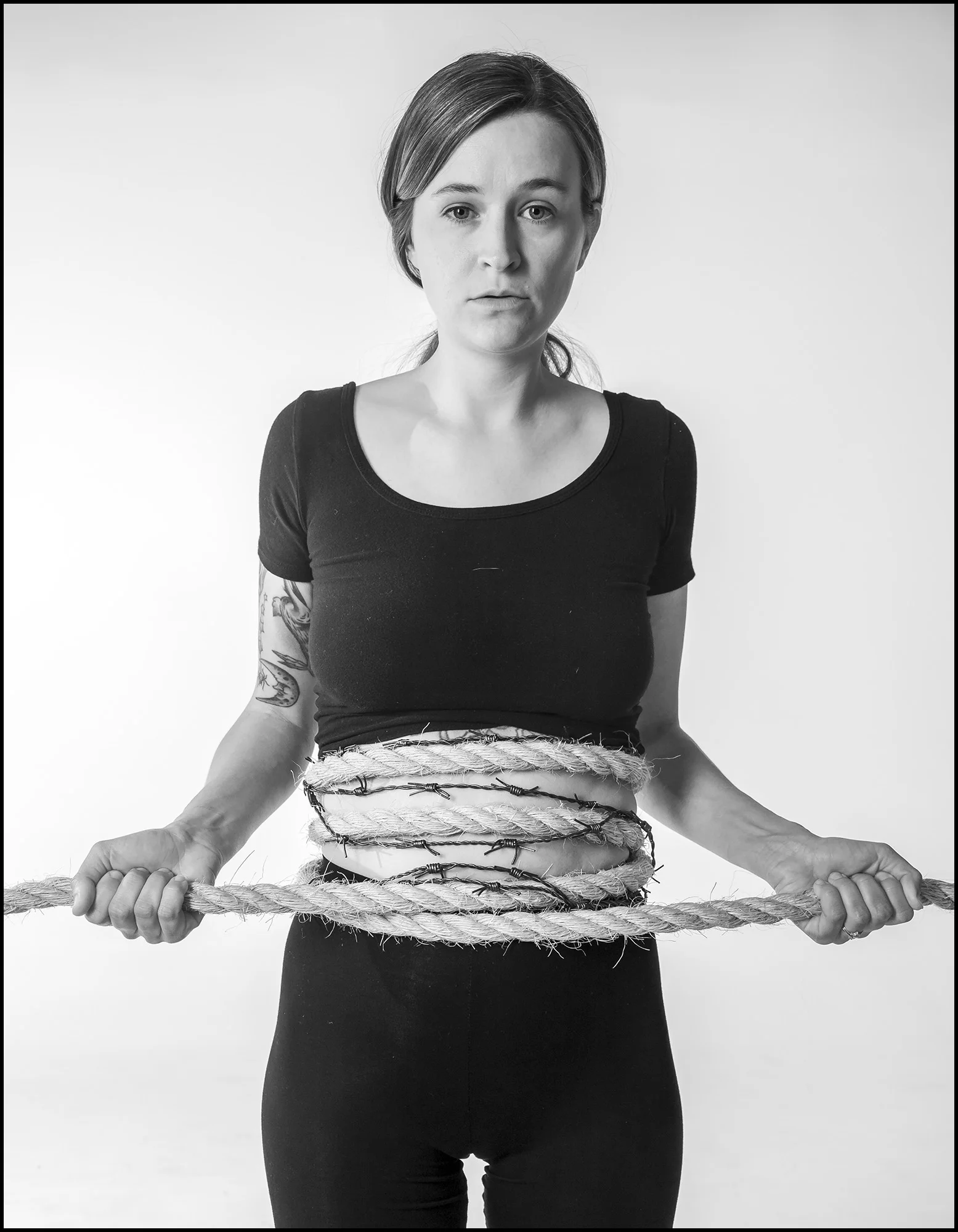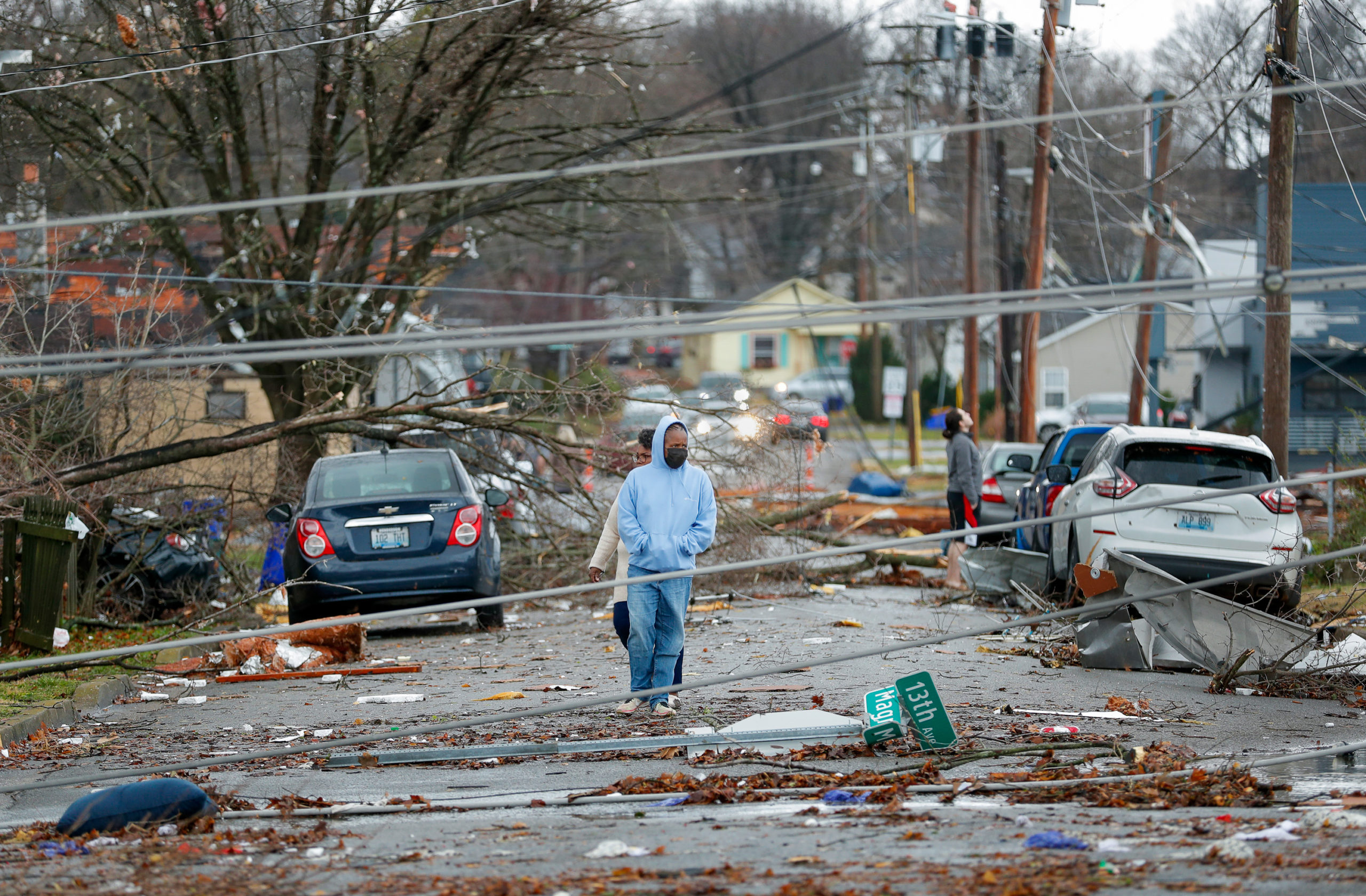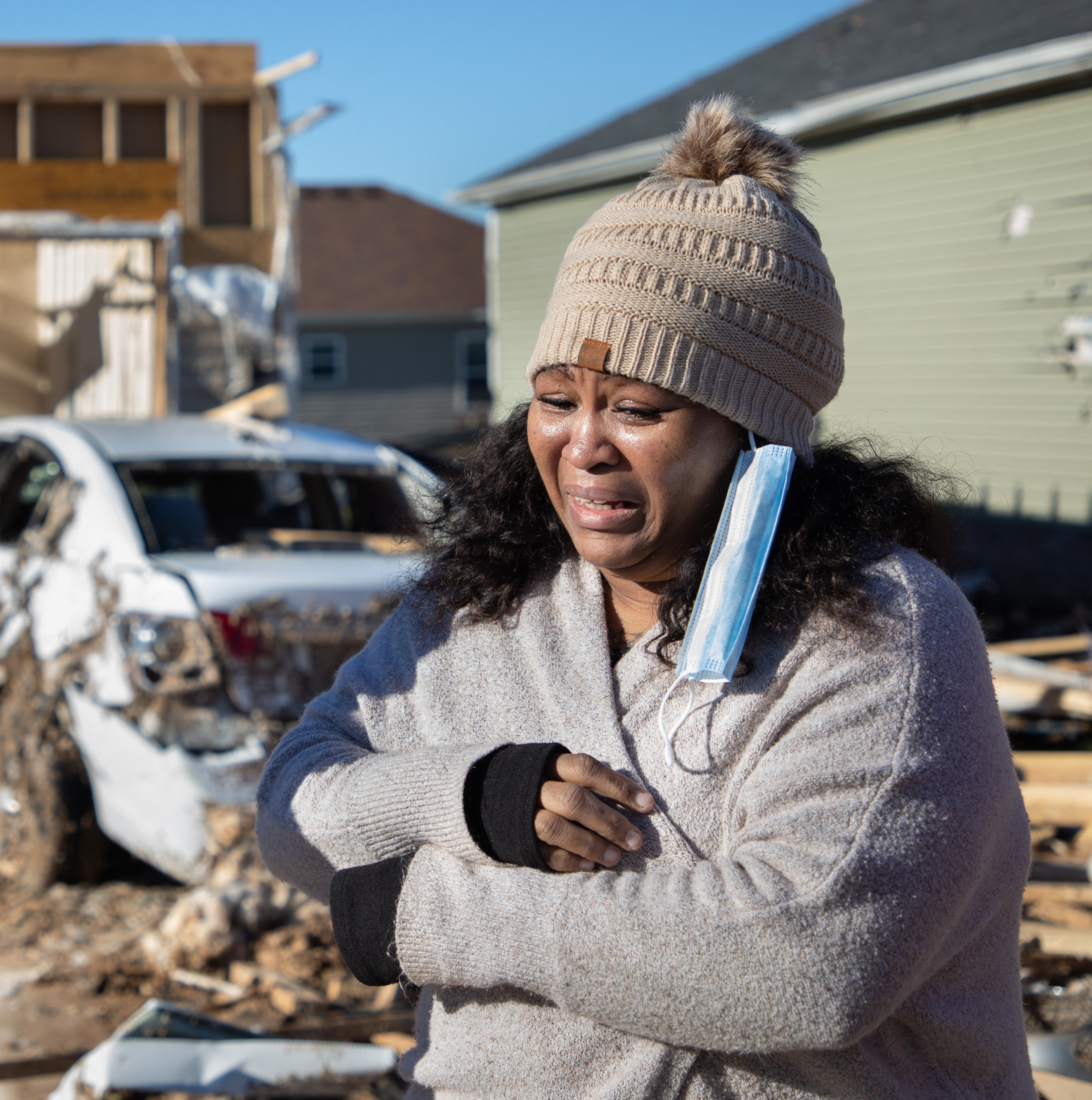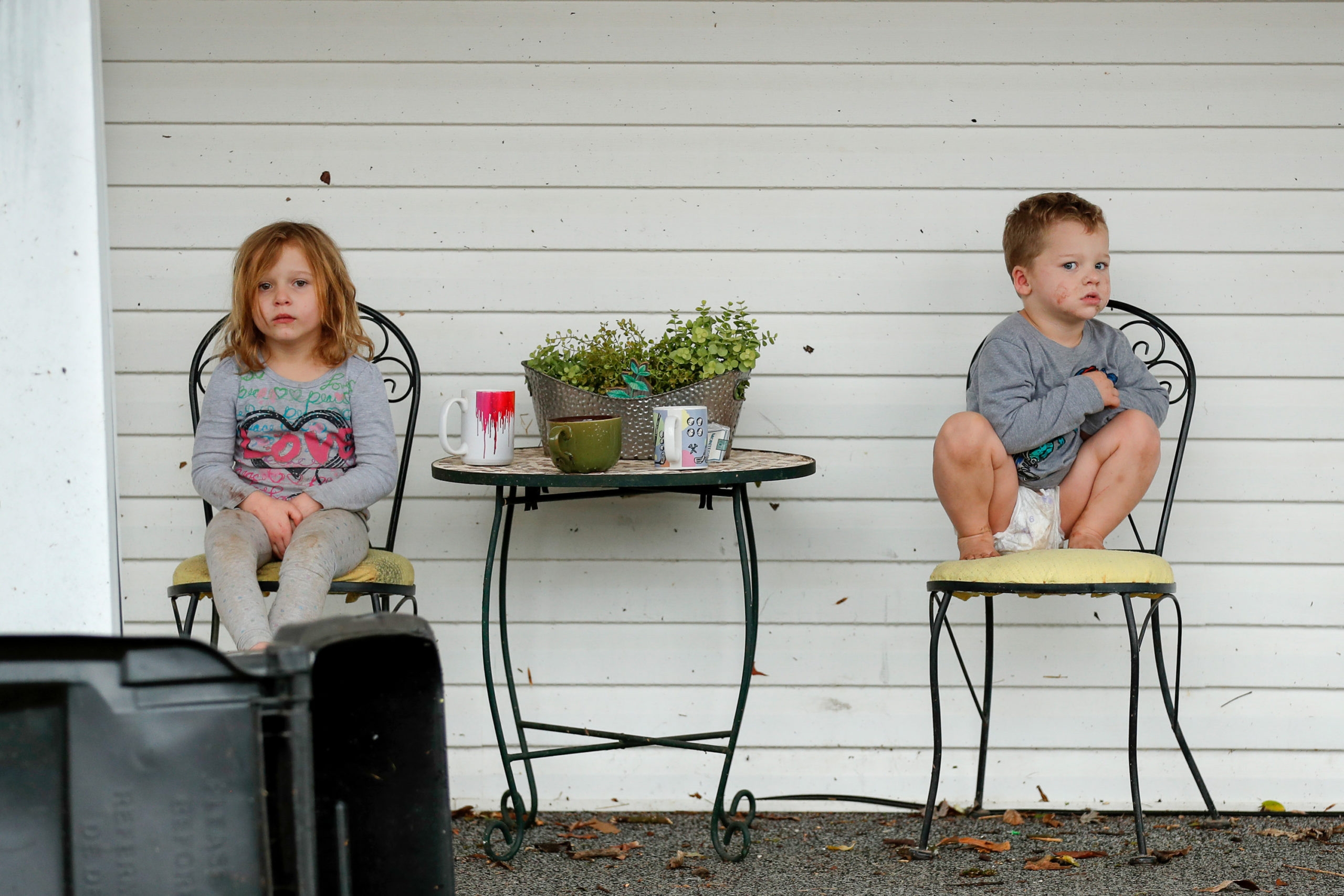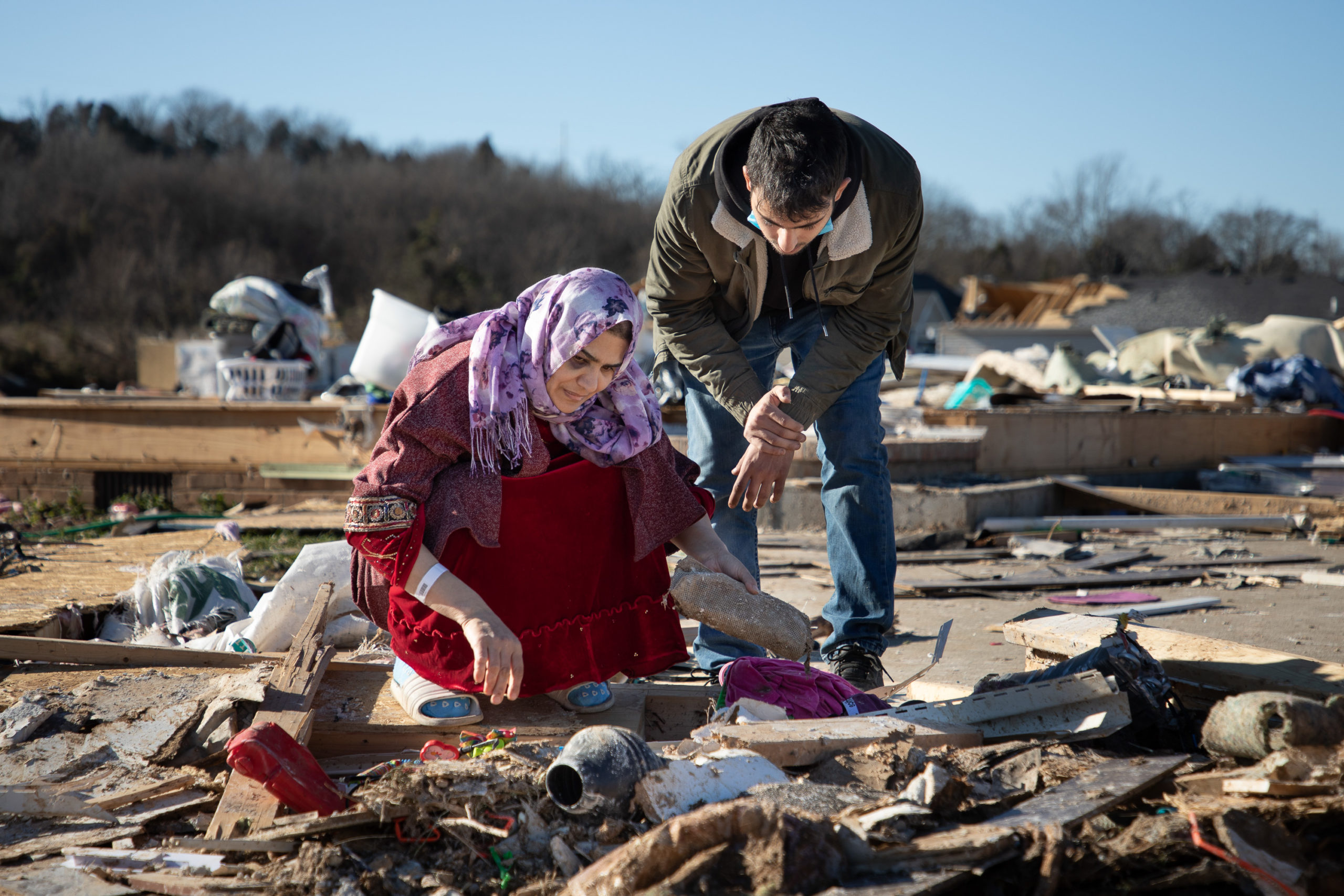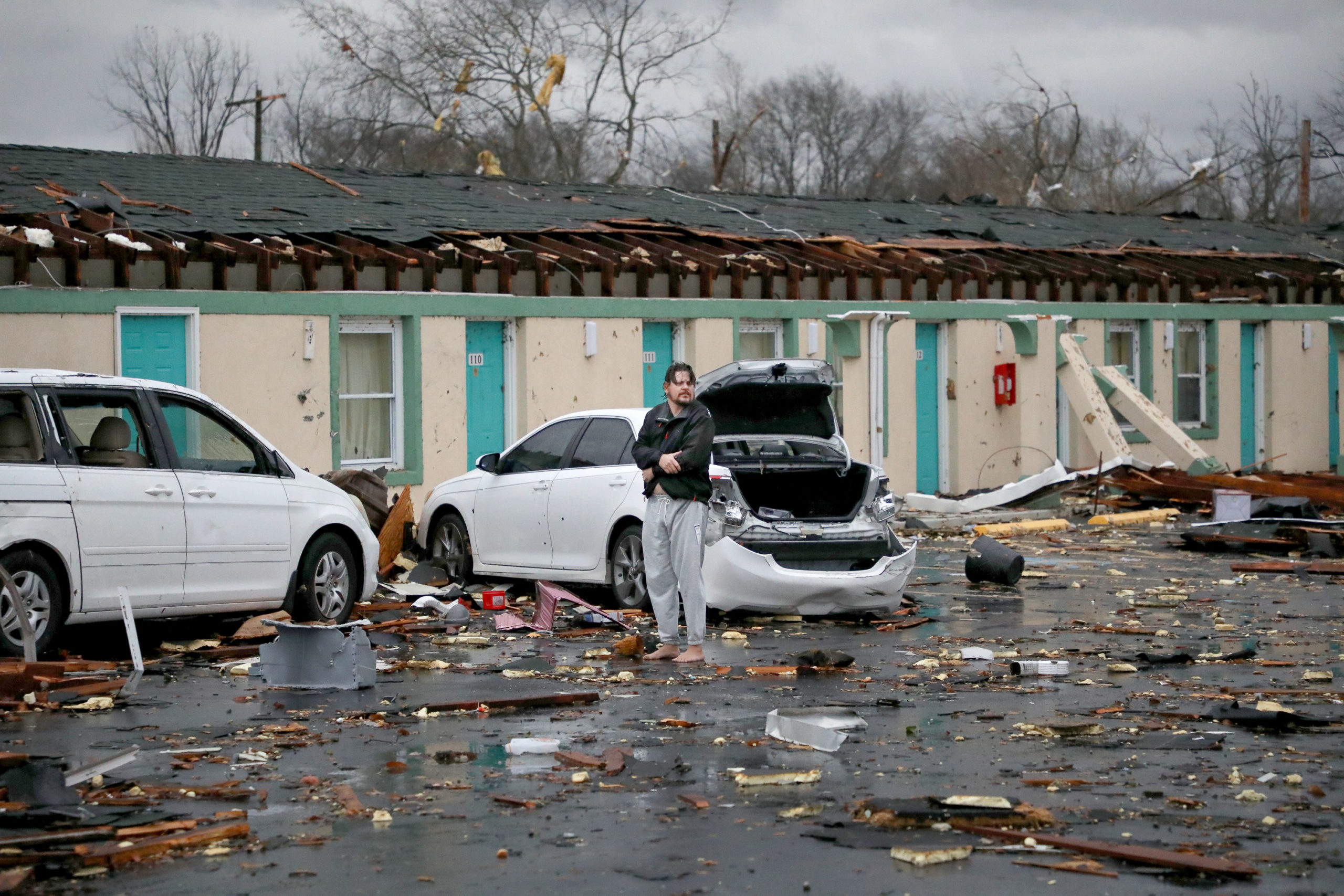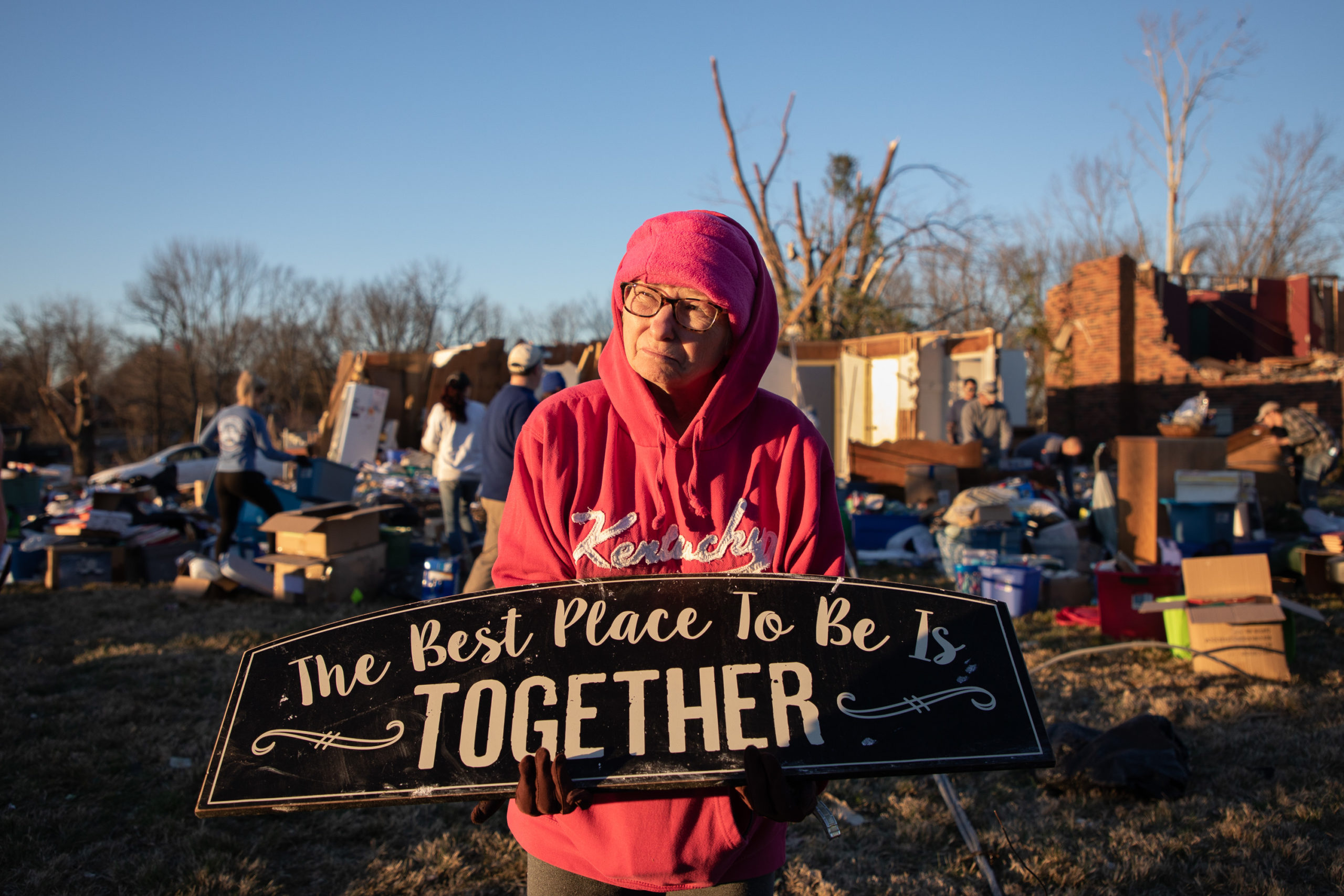At the end of each school year, we ask our capstone PJ436 students to select one photo that means the most to them from their time here at WKUPJ and to tell us something about the image. We hope you spend some time with the work of these talented alumni, it is no easy feat to earn a degree from WKUPJ.
Brenna Pepke
Memphis, Tennessee | Photojournalism major; Studio Arts BFA
INTERNSHIPS
- Artist Residency Boyd Station, Kentucky
- Creative Director, SHOW&TELL, Kentucky
- Artist Residency Azule, North Carolina
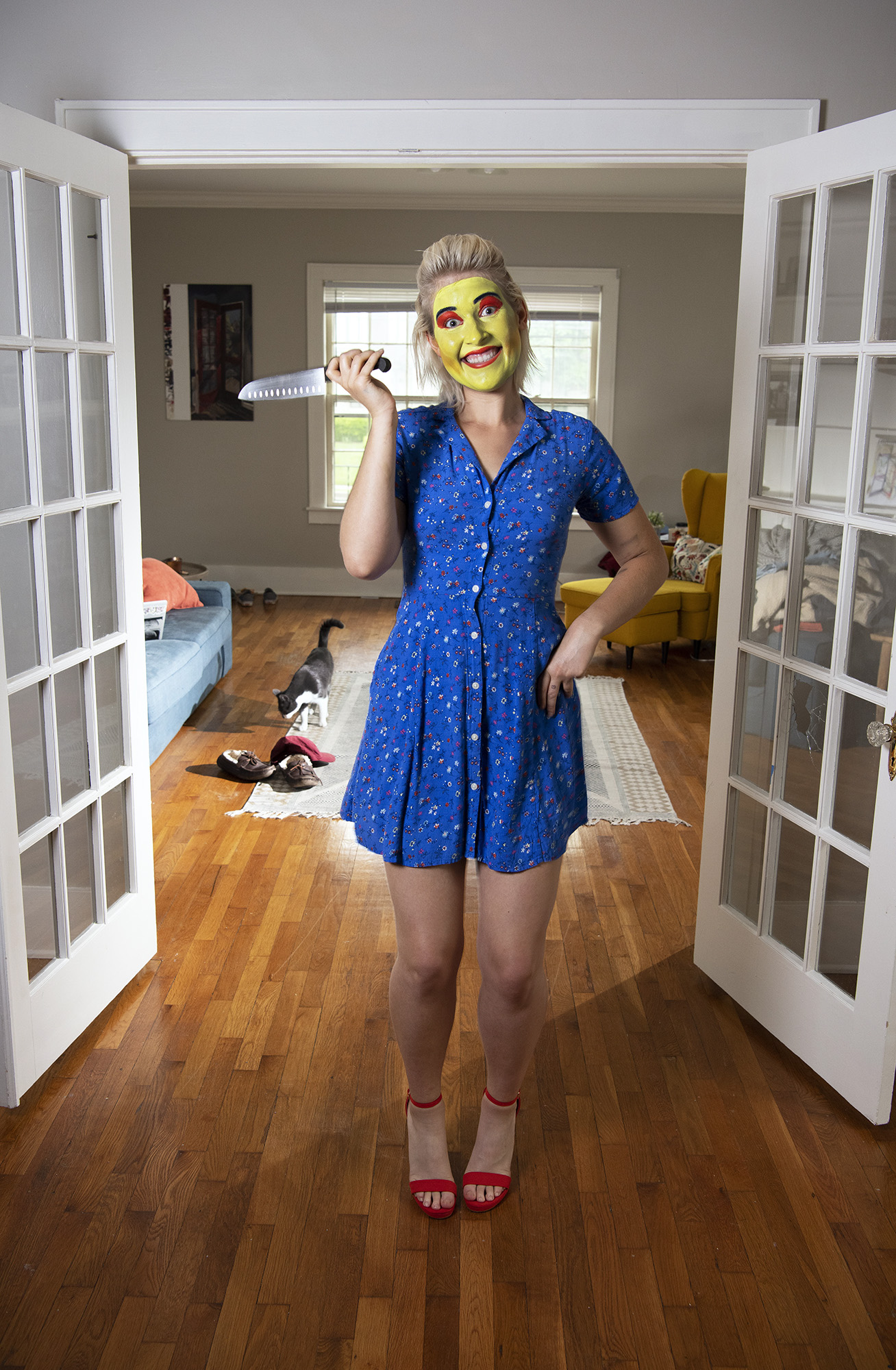
ABOUT THIS PHOTO
As the COVID-19 pandemic lock down was at its’ peak, I was in a studio lighting class. However, without access to campus and therefore the studio, I was forced to experiment with more creative portraits that were created within my own home. Although it was incredibly challenging to be in school during the pandemic, I was able to delve into an un-journalistic portrait series revolving around what I imagine various colors’ personalities might be.
CAPSTONE PROJECT
View Entire Story: http://wkuvjp436.tilda.ws/findinghome
Finding Home: After losing their shared house in the devastating series of tornadoes that swept through the midwest in the winter of 2021, a mother and daughter duo see an opportunity to build separate lives. Facing homelessness, and financial uncertainty both women must continue to provide for their families and redefine their idea of home.
Jordan Matthis
Owensboro, Kentucky | Photojournalism major; Advertising major
INTERNSHIP
- Falling Creek Camp, North Carolina
- Image West, Kentucky
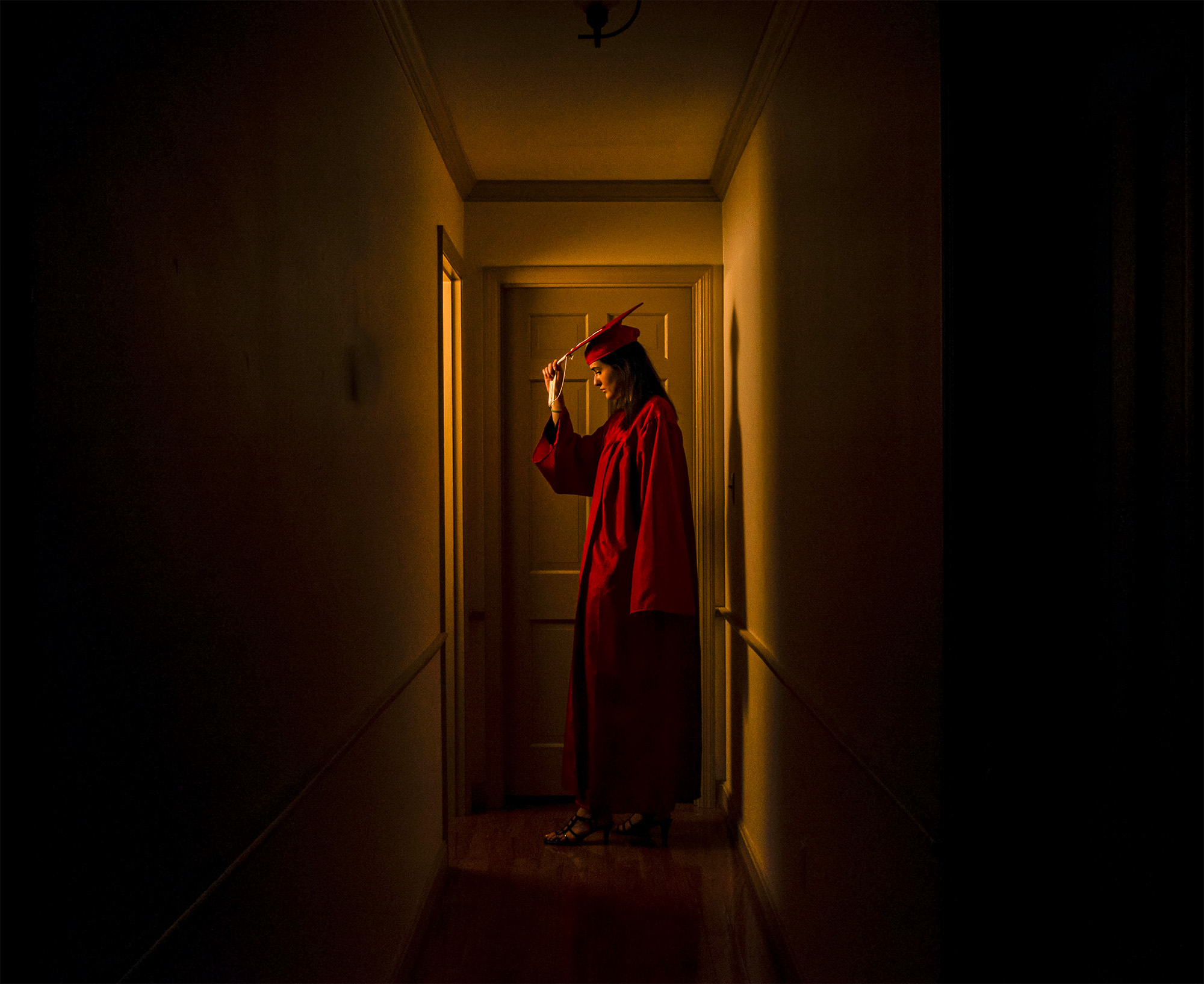
After being sent home from COVID in March of 2020, Jordan Matthis was enrolled in Intro to Studio Lighting in which she was challenged to learn technical lighting skills through weekly zoom classes and photographing herself. This photograph is part of a 5-studio portrait final, where she replicated famous paintings and dedicated a portrait to the 2020 graduates who lost their important chapter of graduation.
ABOUT THIS PHOTO
While being in the pandemic and locked in my house, my creativity and motivation hit a low. While seeing everything diminished and halted by the shutdown, I took it on myself to produce something that is meaningful, impactful, and represents a portion of time of graduation. I find this photograph now to be very sentimental to me as my college career comes to an end and seeing how the world has changed.
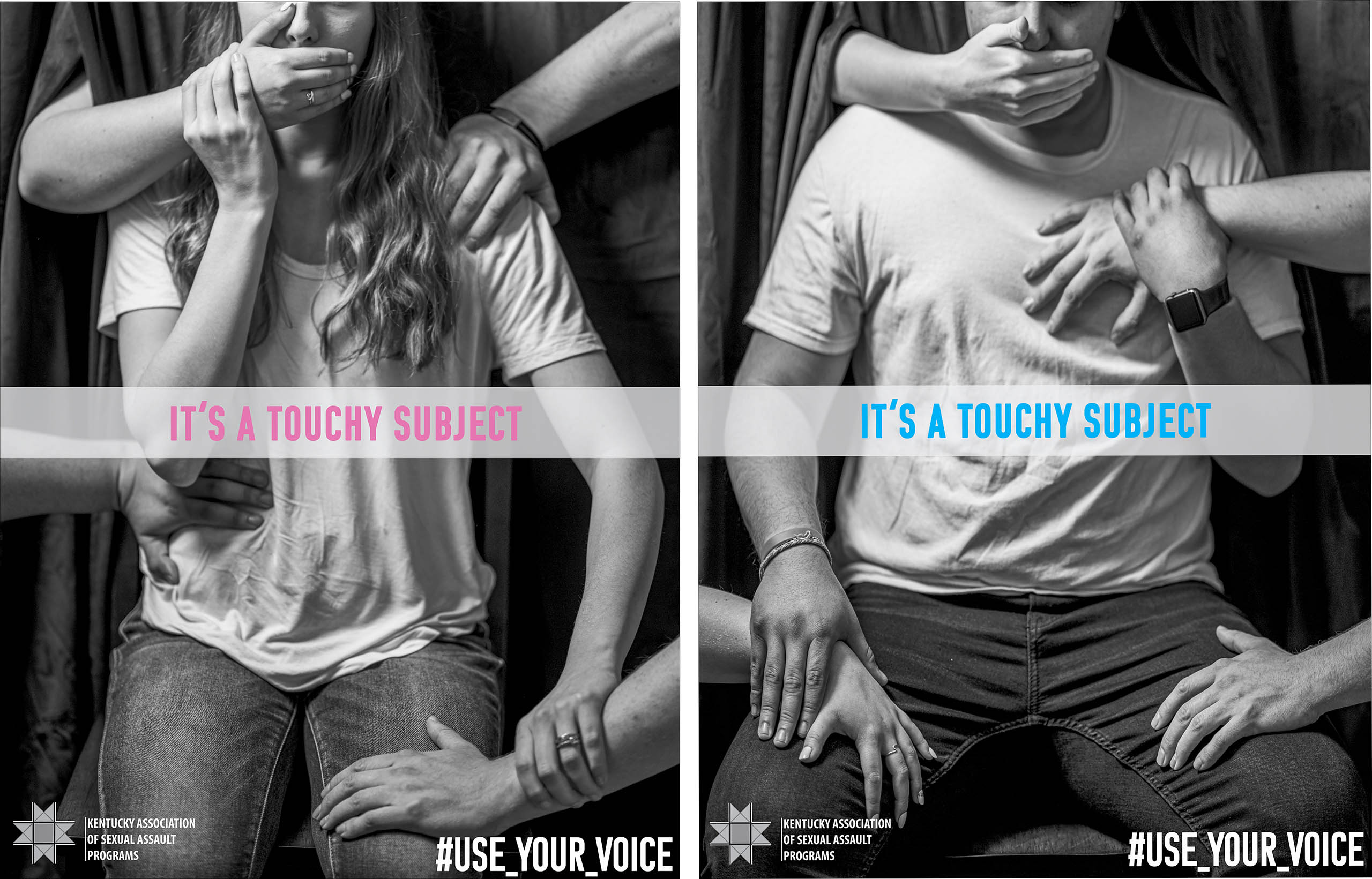
In 2019, Jordan Matthis created a series of iconography and photography campaign posters to address and create awareness of the issue of sexual assault towards young adults. Western Kentucky students Hannah Reed and Daniel Garcia volunteered to model for the campaign to showcase that both genders can be affected/silenced by sexual assault.
ABOUT THIS PHOTO
These campaign posters are important to me because it was the first project between my two majors, advertising, and photojournalism, that I could intertwine my technical and creative skillset of photography and studio lighting with my knowledge of strategy and communication to connect to a wide audience over a sensitive topic.
CAPSTONE PROJECT
View Entire Story: http://wkuvjp436.tilda.ws/unconditional
Unconditional by Sam Mallon & Jordan Matthis
Zane Meyer-Thornton
Los Angeles, California | Photojournalism major; Sociology minor
INTERNSHIPS
- Cincinnati Enquirer, Ohio
- Native American Journalists Association, Fellowhip/Remote
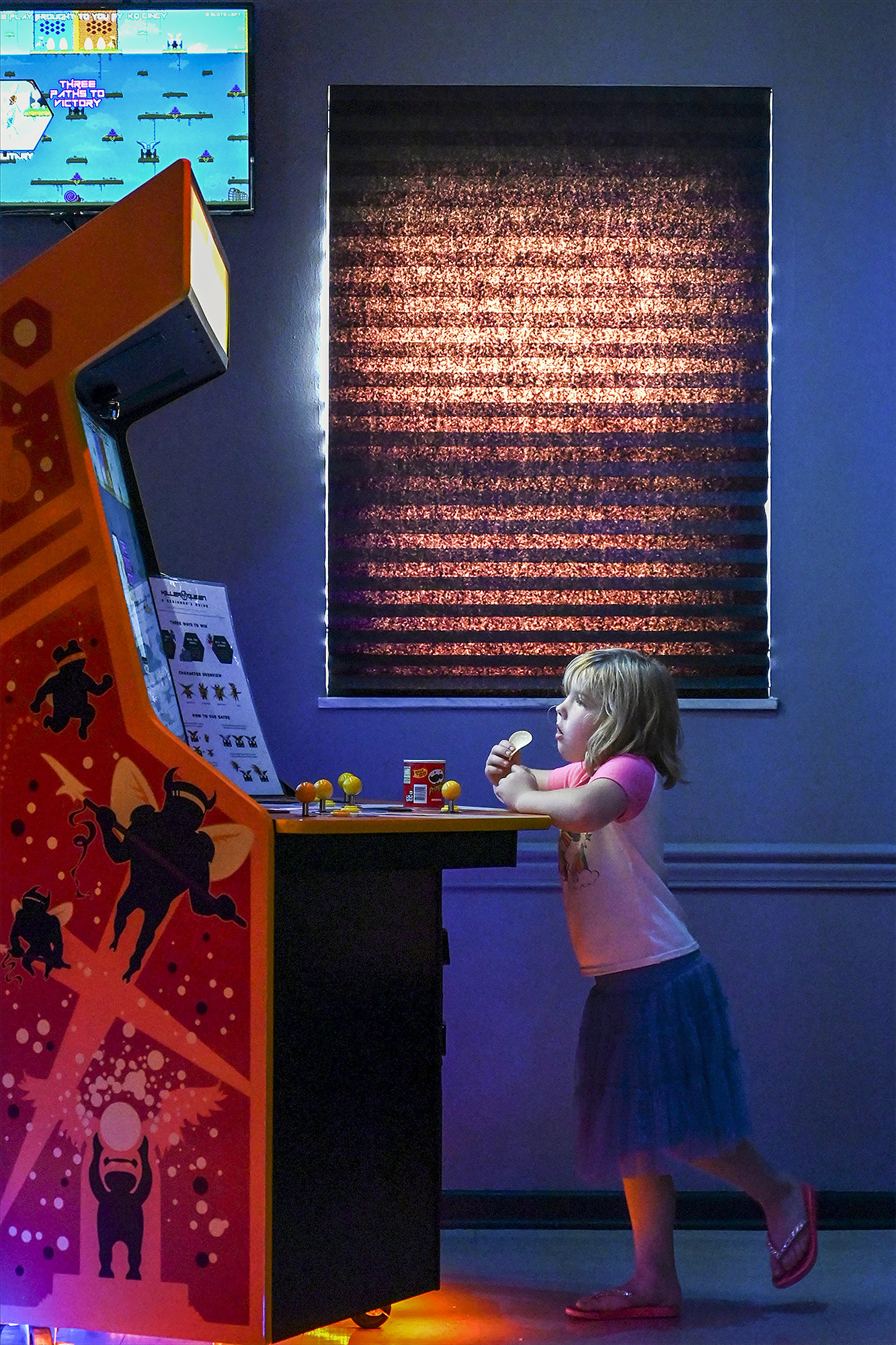
Ellie Banaszynski, 5, has a snack between games of Killerqueen on Sunday, June 20, 2021, at Wondercade Cincy. By having only classic arcade games, Wondercade Cincy is helping a new generation of people enjoy games from years past.
ABOUT THIS PHOTO
When I first got to this arcade, I thought to myself “what a nightmare of a place to photograph”. All the windows were covered, which made available light extremely scarce. As I walked down an aisle and looked to my left, Ellie’s infatuation with the game stopped me in my tracks and reminded me to never overlook a situation.
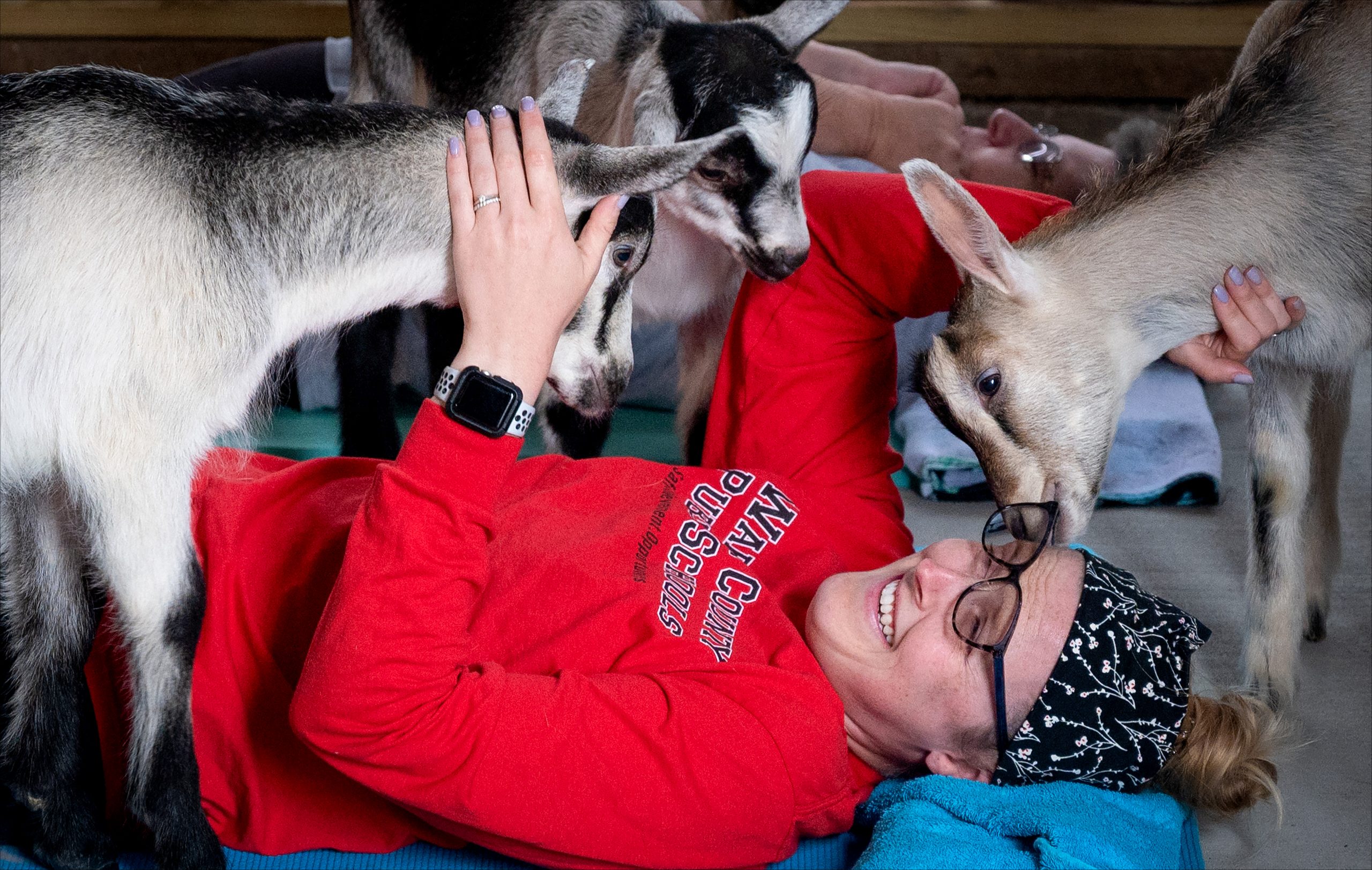
Sarah Anderson is swarmed by goats during her goat yoga class at Westbrook Farms in Bowling Green, Ky. on April 17, 2021. The class was organized by Be Happy Yoga and Westbrook Farms to combine the calming effects of yoga with the joyful experience of playing with goats.
ABOUT THIS PHOTO
Photographing a goat yoga class was something I would have never imagined doing but represents why I love photojournalism. Inhabiting these light slivers of the world where people find true joy will forever be why I enjoy this craft.
CAPSTONE PROJECT
View Entire Story: http://wkuvjp436.tilda.ws/crux
Crux by Addison LeBoutillier & Zane Meyer-Thornton
Our individualistic perspective of the world determines what makes life fulfilling. Rock climbing represented this for Sunny Yang, until he was left paralyzed from the neck-down after being struck by a distracted truck-driver. When doctors informed Sunny that he would be paralyzed for the rest of his life, he told them to not provide any more life-saving treatment for him; he would rather die than live a life without rock climbing. However, the support of his wife children, and the rock-climbing community helped him realize what matters most.
Kennedy Gott
Bowling Green, Kentucky | Photojournalism major; Philosophy minor
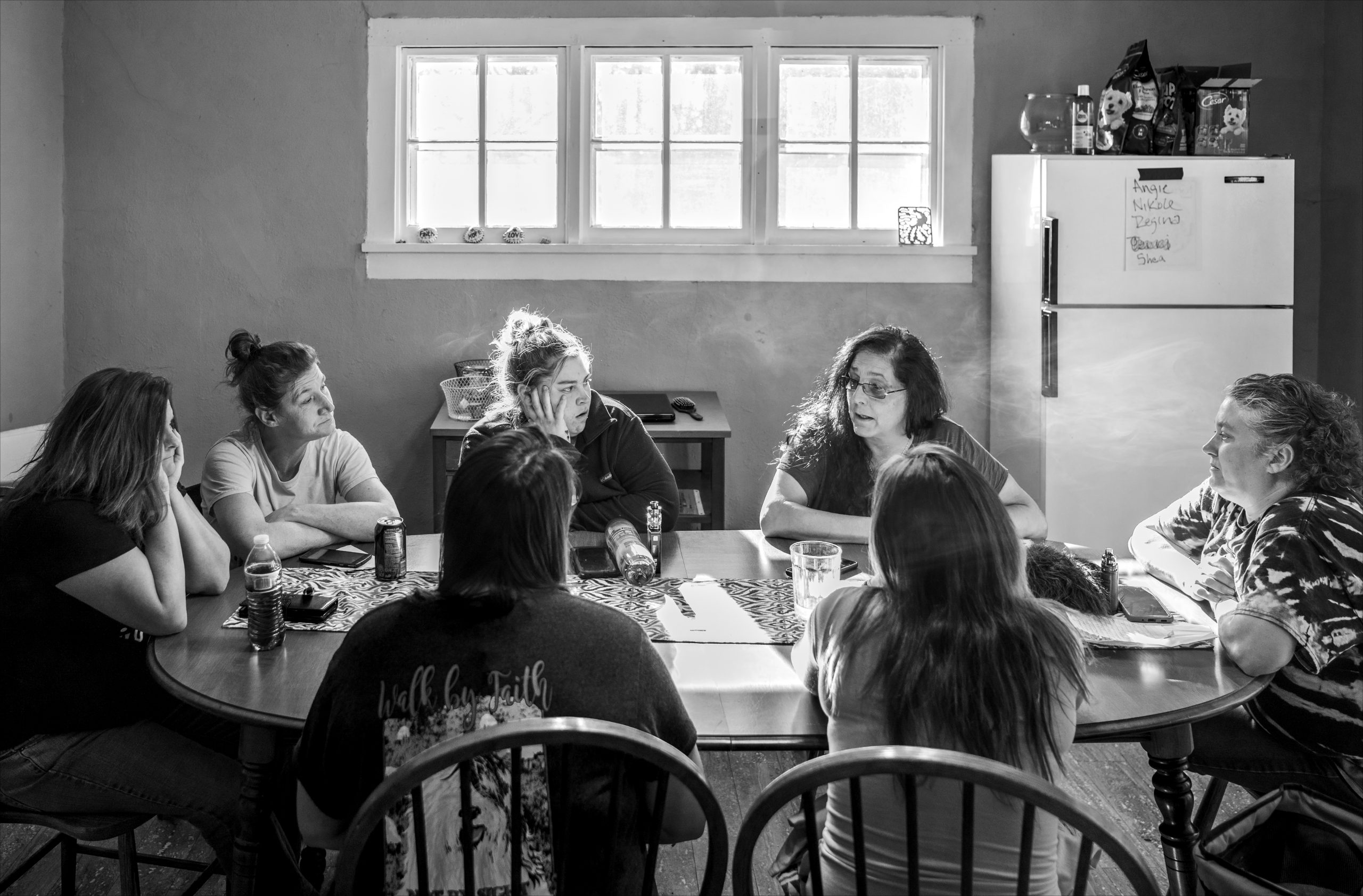
During weekly Sunday meetings at Faith Works Sober Living Home, the women living in the home reflect on their week, their struggles, their success, and their emotions. Regina Hensley (second to the right) relapsed after losing her sun to cancer on August 9, 2015. She gave into her addiction to alcohol through these tough times; yet, in September 2020, she chose the road to recovery and moved into Faith Works Sober Living Home in January 2021. “I can’t remember anything from the past two years. But I remember everything since September. Since I’ve been sober. Since I’ve lived in this house,” Hensley said.
ABOUT THIS PHOTO
This was the first story that I did where I got completely out of my comfort zone. I had been photographing family members since I started my photojournalism journey in the middle of the COVID pandemic, and this was the first story that I did where I got to connect to and get to know someone that I had never met before. This story made me realize the importance of photojournalism and the impact that it makes on others and the world. The ladies of the Faith Works told me that they were happy to have me and share their stories because “most people don’t care about people like them,” and they appreciated that I did care.
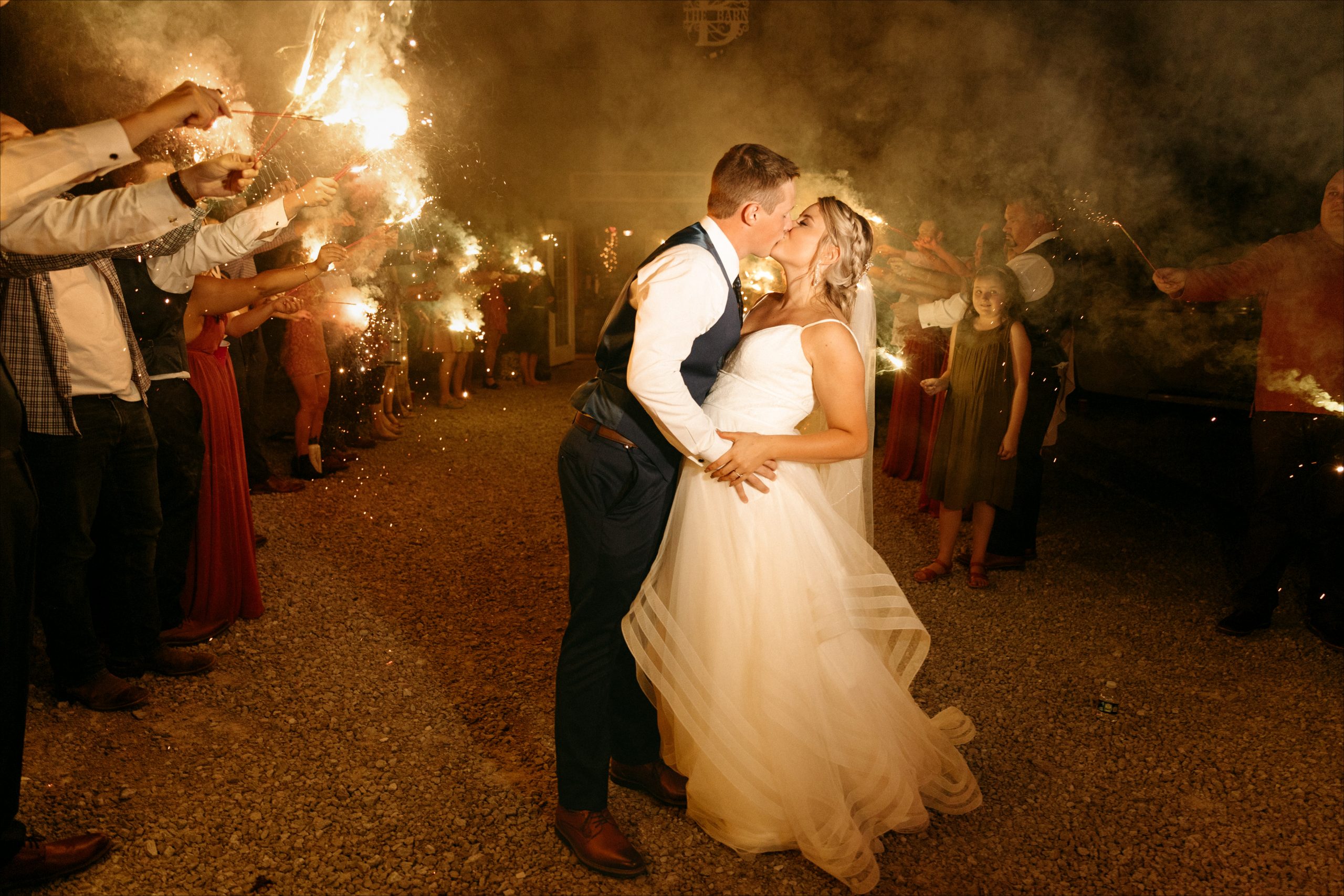
Lauren and Lucas Moore got married on October 2nd, 2021. It was a day filled with tears, laughter, and lots of dancing. They did a huge sparkler send-off at the end of the night, where the sparkler smoke filled the air and lit the sky in orange, red and yellow colors.
ABOUT THIS PHOTO
Wedding photography has been a huge part of my photojournalism journey. When I got my first wedding inquiry for a wedding on August 8th, 2020, I was baffled. This was something that had been a goal of mine since I picked up a camera. After I photographed that wedding, the wedding inquiries started flooding into my email inbox. I photographed 3 weddings in 2020, 25 in 2021 and have 16 planned for 2022. Photographing weddings has taught me a lot about how to connect with people, how to take pretty and meaningful photos and how to hustle. I am thankful for each of my couples that I have had the honor to photograph and get to know.
Photographing weddings also taught me that it is okay to change my dreams and goals. I came into the photojournalism department at WKU with tunnel vision that I was going to be a wedding photographer for the rest of my life and that was it. As I learned the value of photojournalism, I realized that there might be more out there for me than wedding photography, and I am open to seeing where life takes me after graduation.
Addison Leboutillier
Owensboro, Kentucky | Photojournalism major; Digital Advertising minor
INTERNSHIP
- Center for Gifted Studies, Kentucky
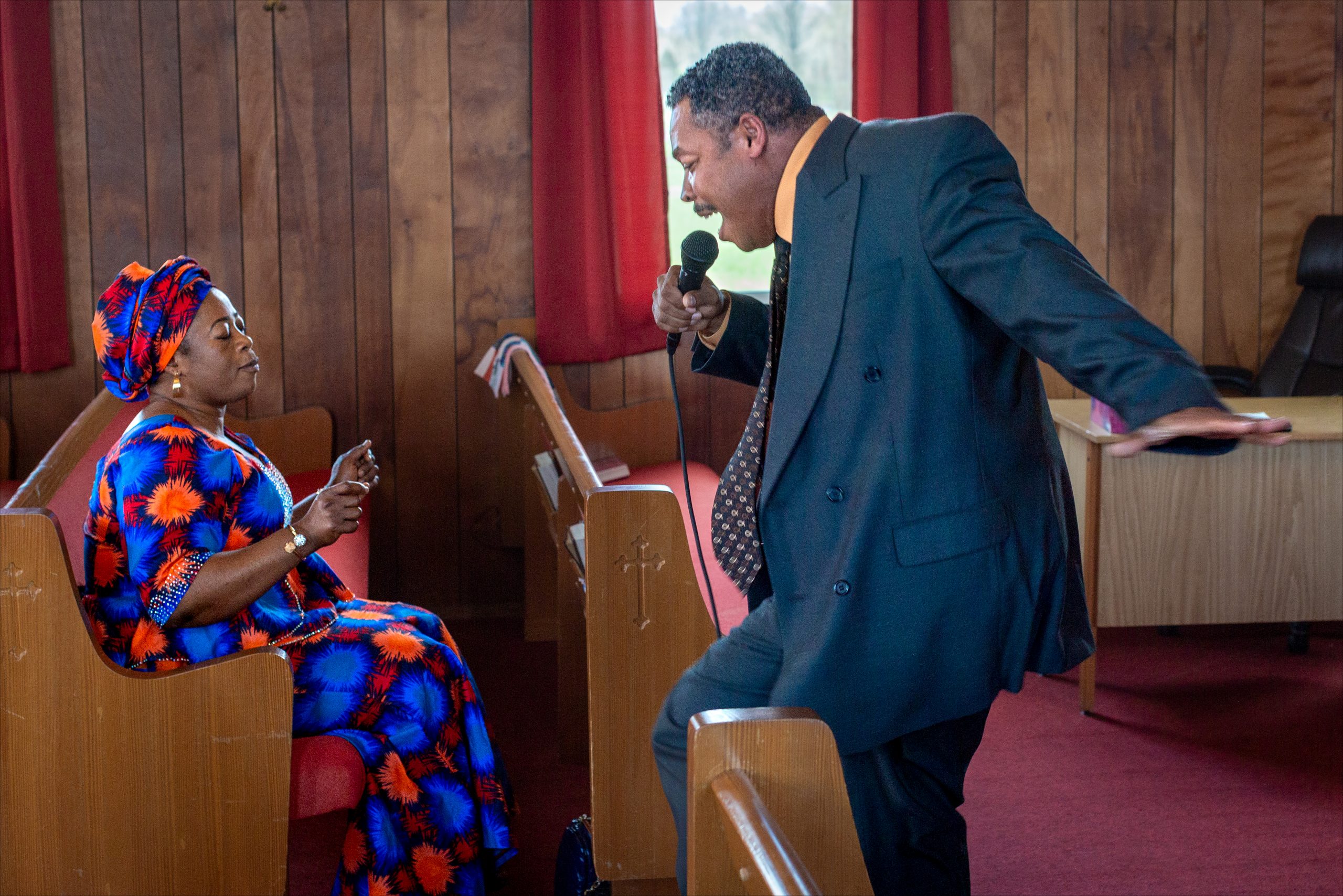
The Pastor of Little Flock Church in Owensboro, Ky sings praises after Nala Olou (left) announced that she had finally gained her United States citizenship after ten long years of appeals.
ABOUT THIS PHOTO
For me, this photo was one of the first times that I felt truly pushed out of my comfort zone. It was for our Faith assignment freshman year, and I didn’t have many leads going into it. However, I remembered a small wooden church sitting in a field just off the bypass that I had seen several times while driving between Bowling Green and Owensboro. One day I went, and I could not have felt more welcomed. It gave me an insight for the first time into how important it is to just stop and ask, there can be good images wherever you go.
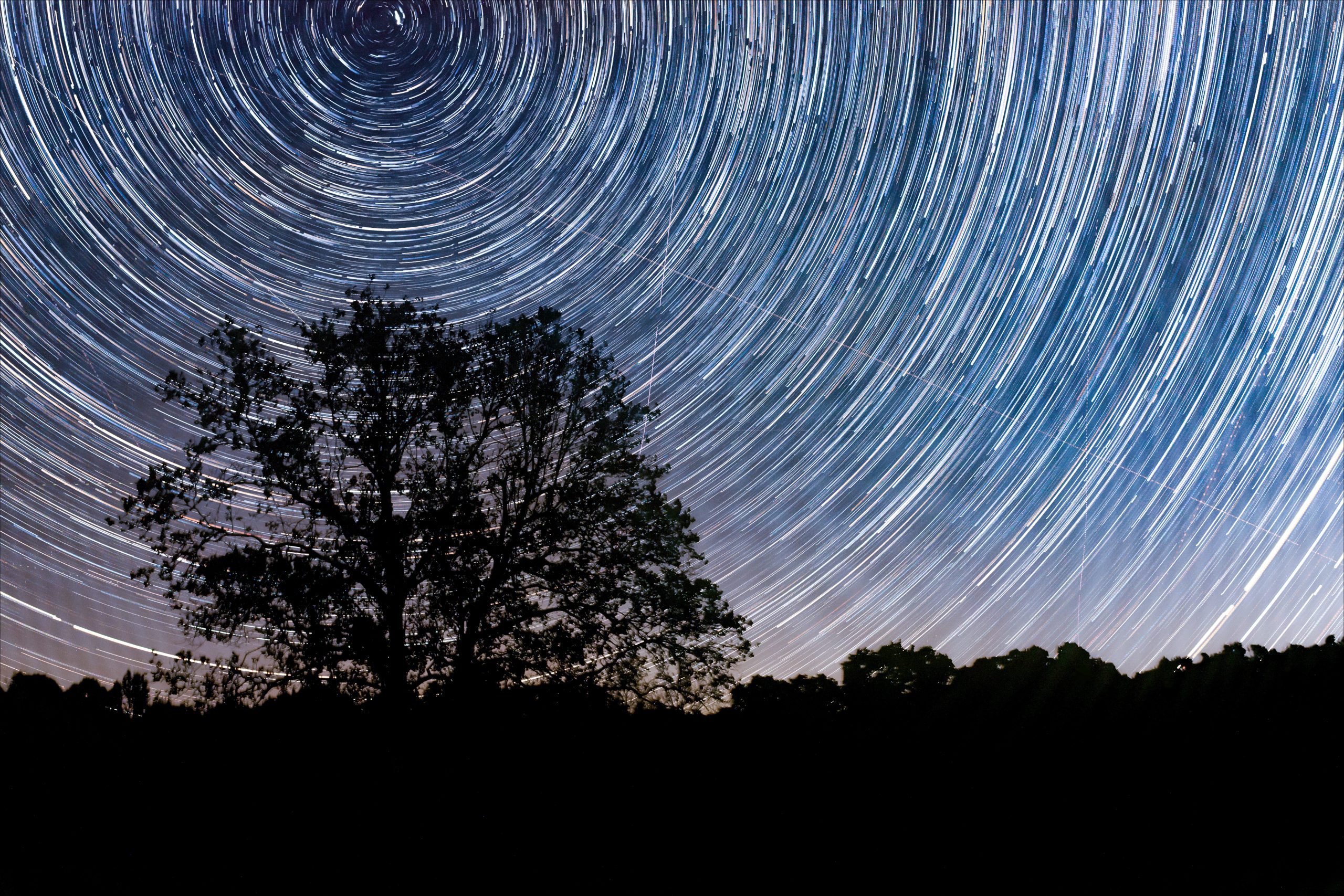
Stars trail across the sky on Saturday, October 9, 2021.
ABOUT THIS PHOTO
This was one of my favorite nights over the four years I spent in this program. Our class had the opportunity to go film star trails together in October of 2021. Whenever I look back at this composite, I think of the four-plus hours spent sitting together in the dark trying in vain to keep the moisture off our cameras. Yet despite all the frustration, it was a reminder of why this program is special. In the middle of the night when no sane person would be awake, we were all up together. For no reason other than wanting to try, we stayed out in that soggy field pushing each other to create something beautiful.
CAPSTONE PROJECT
View Entire Story: http://wkuvjp436.tilda.ws/crux
Crux by Addison LeBoutillier & Zane Meyer-Thornton
Our individualistic perspective of the world determines what makes life fulfilling. Rock climbing represented this for Sunny Yang, until he was left paralyzed from the neck-down after being struck by a distracted truck-driver. When doctors informed Sunny that he would be paralyzed for the rest of his life, he told them to not provide any more life-saving treatment for him; he would rather die than live a life without rock climbing. However, the support of his wife children, and the rock-climbing community helped him realize what matters most.
Sam Mallon
Silver Spring, Maryland | Photojournalism major; Gender and Women’s Studies minor
INTERNSHIPS
- Lexington Herald Leader, Kentucky
- Friends of Acadia, Maine
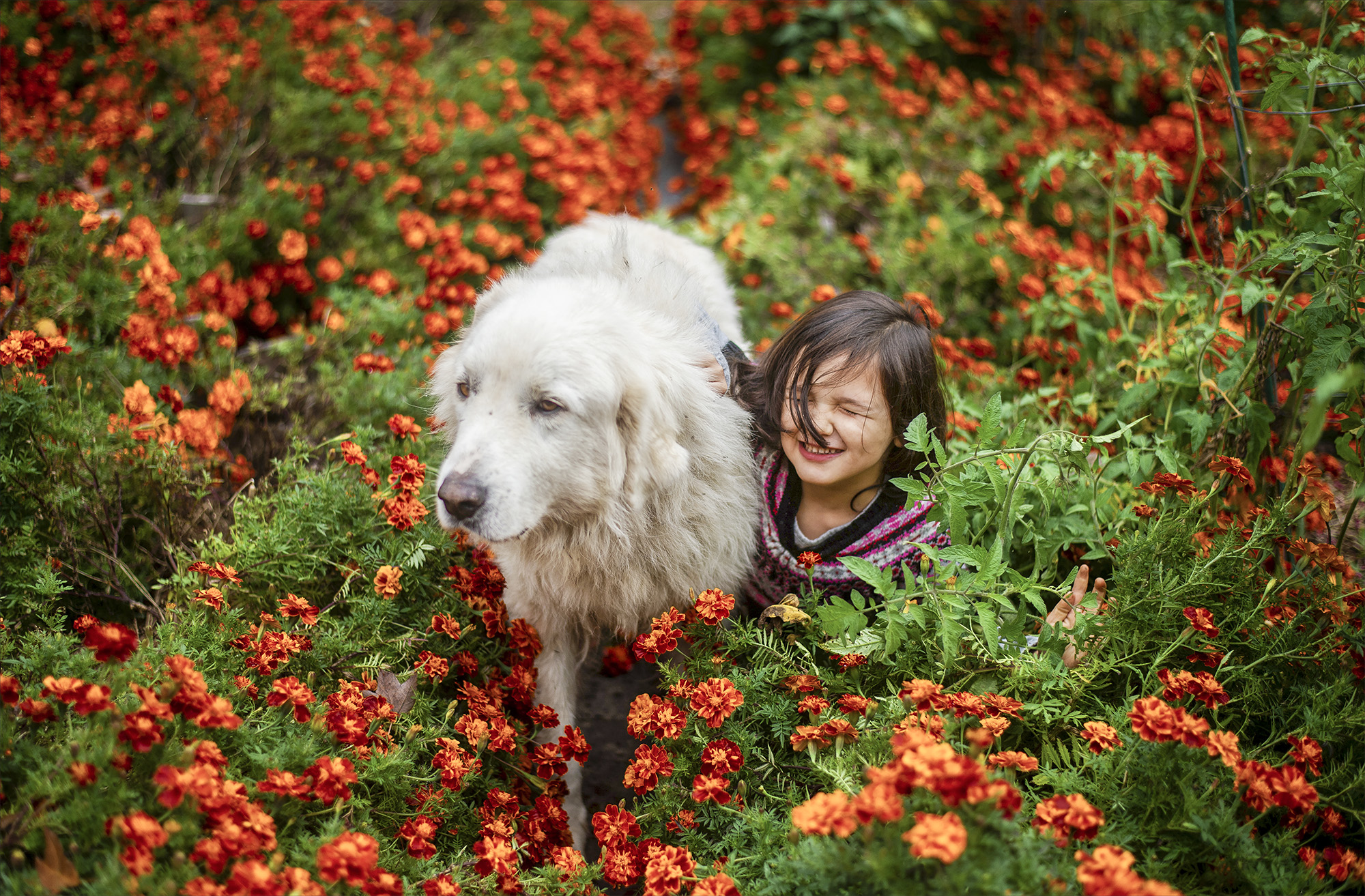
“I thought a lot about Wild Earth being this space where we don’t just say what’s wrong with the world, we really show what can be right with the world,” Heather Patrick said, a co-founder of Wild Earth Farm and Sanctuary. Patrick homeschools her daughter, Everly, 5, and the two spend most of their days learning and playing outdoors.
ABOUT THIS PHOTO
This photo is from a story that was a bit of a passion project of mine: I happened upon Wild Earth Farm and Sanctuary on Facebook one day and immediately knew that I needed to get out to Eastern Kentucky to capture the essence of the place. Co-founder Heather Patrick was gracious enough to let me into her and her daughter’s lives whenever I was able to make trips out there that semester, and the entire experience taught me so much not only about who I am and want to be as a storyteller, but as a person. When I look back at this photograph, I am immediately reminded of why I love this craft so much; and I can’t help but grin to match Everly’s contagious smile.
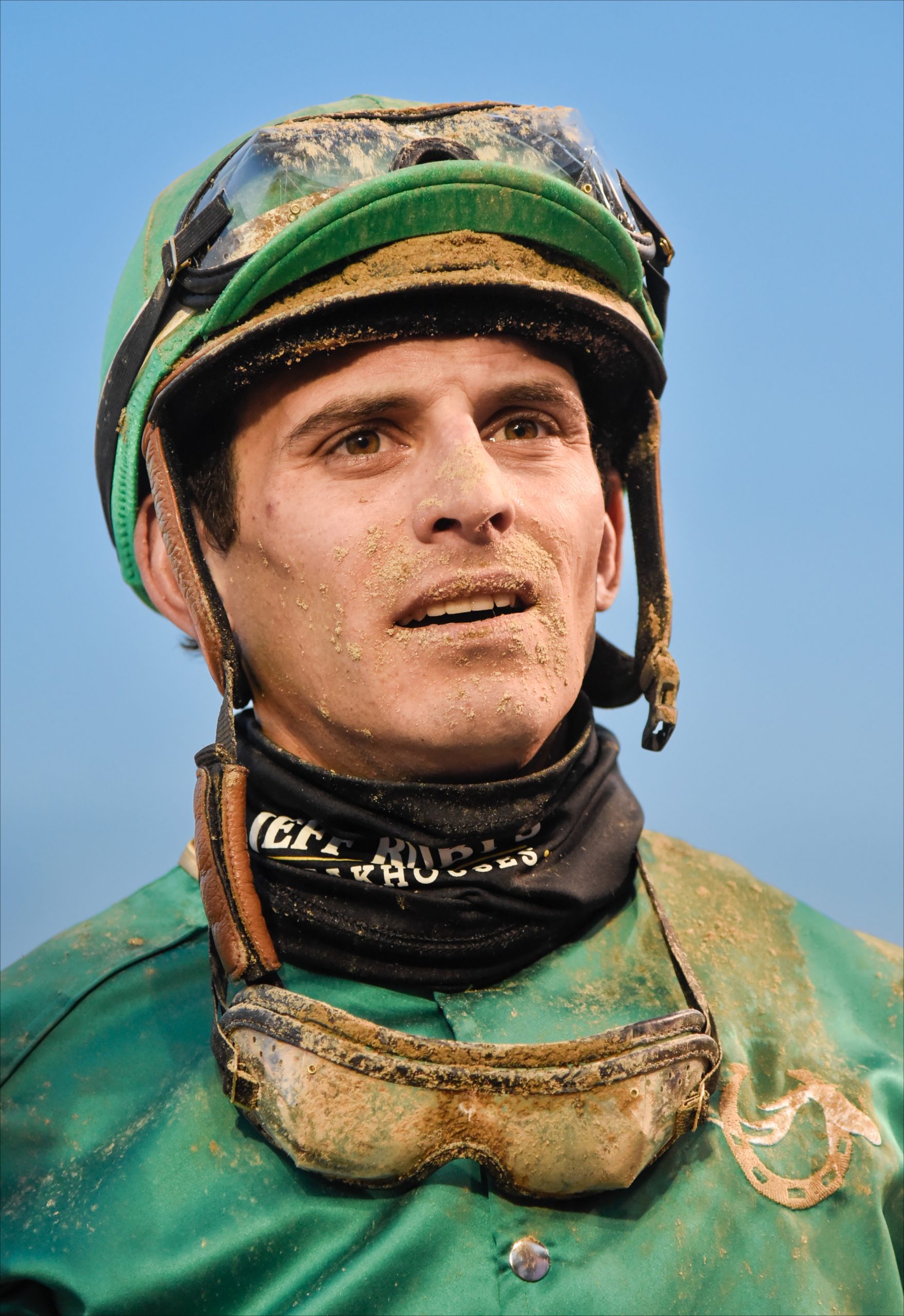
Jockey Chris Landeros is speckled in dirt after finishing seventh riding King’s Mischief in Race 14, the final race of the evening at Churchill Downs following the Kentucky Derby on May 1, 2021, in Louisville, Kentucky.
ABOUT THIS PHOTO
Photographing the Kentucky Derby is an experience unlike any other — the energy that exists at Churchill Downs that first weekend of May is surreal, contagious, and beautifully bizarre. It might be a sporting event, but the intersection of light, color and personality that erupts throughout the entire stadium is any feature photographer’s dream. This is one of the last photos I took after last year’s race day; most photographers had retreated to the media room by that point, but I simply couldn’t peel away — there’s no fourteen-hour workday I look forward to the way I do the Derby.
CAPSTONE PROJECT
View Entire Story: http://wkuvjp436.tilda.ws/unconditional
Unconditional by Sam Mallon & Jordan Matthis
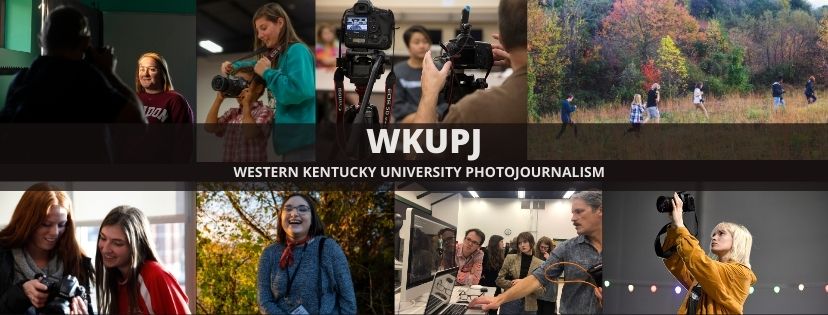
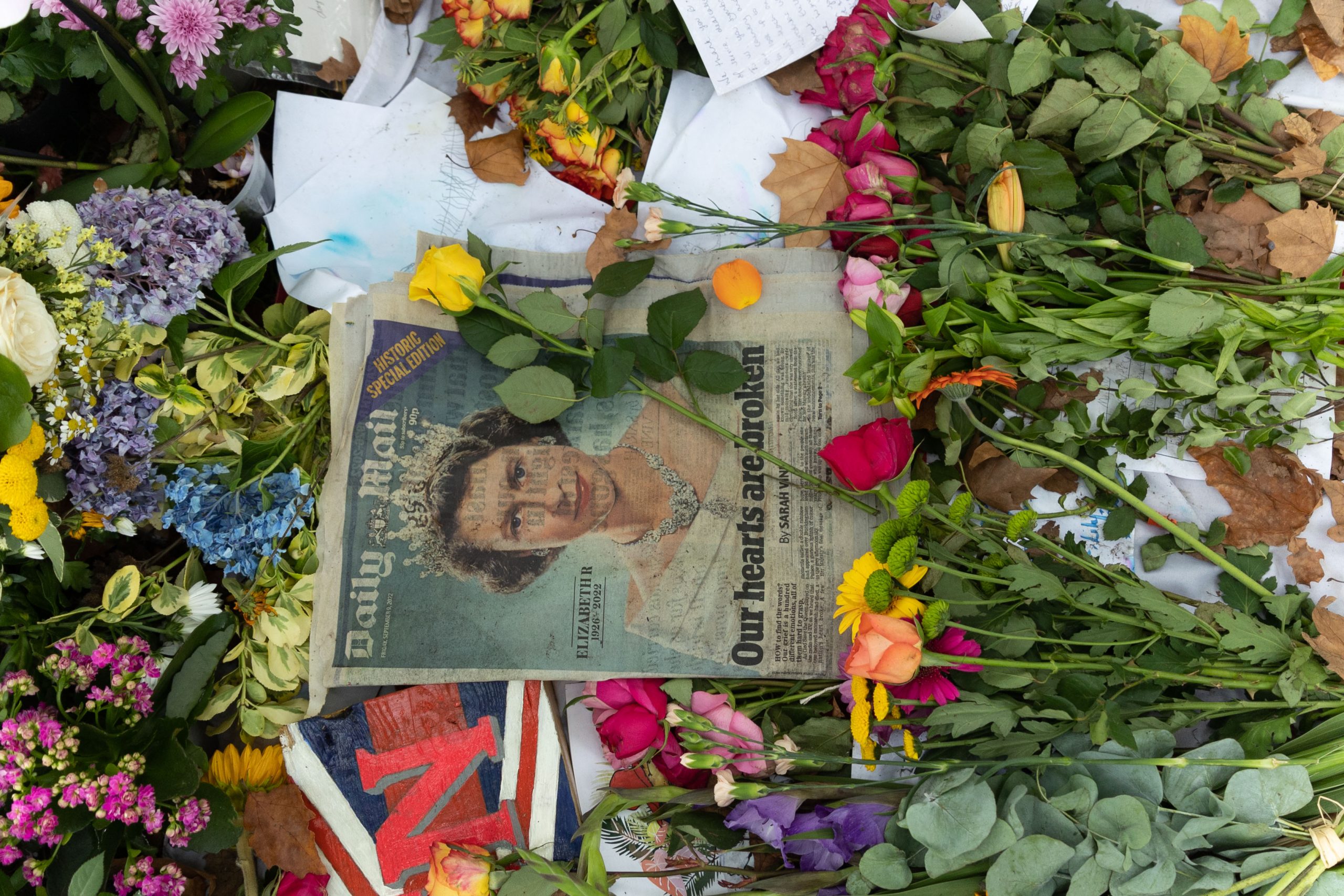
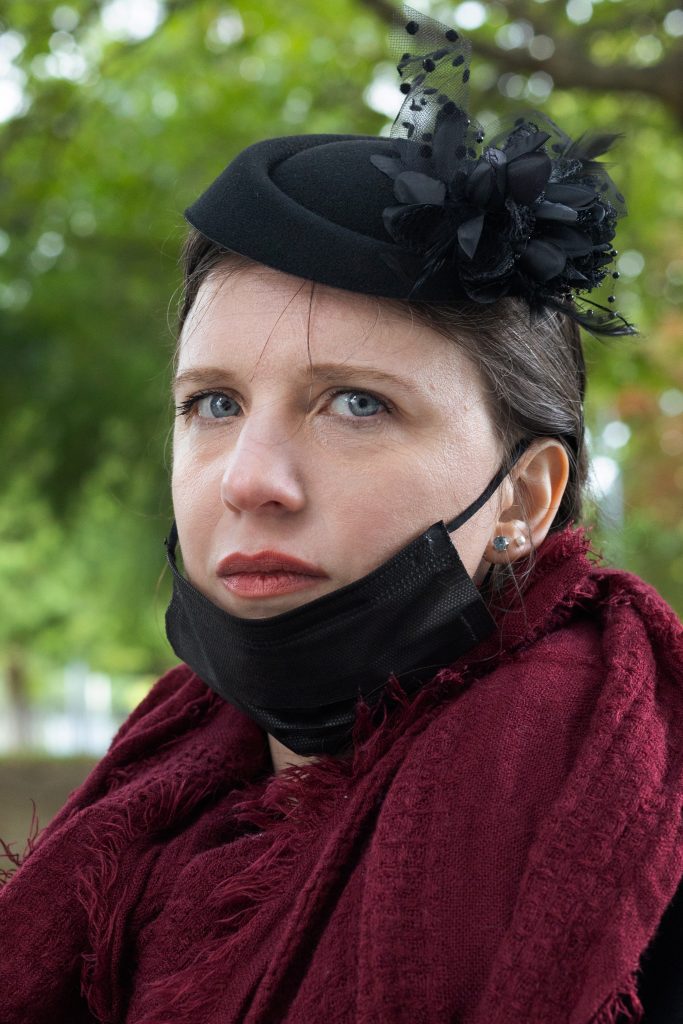
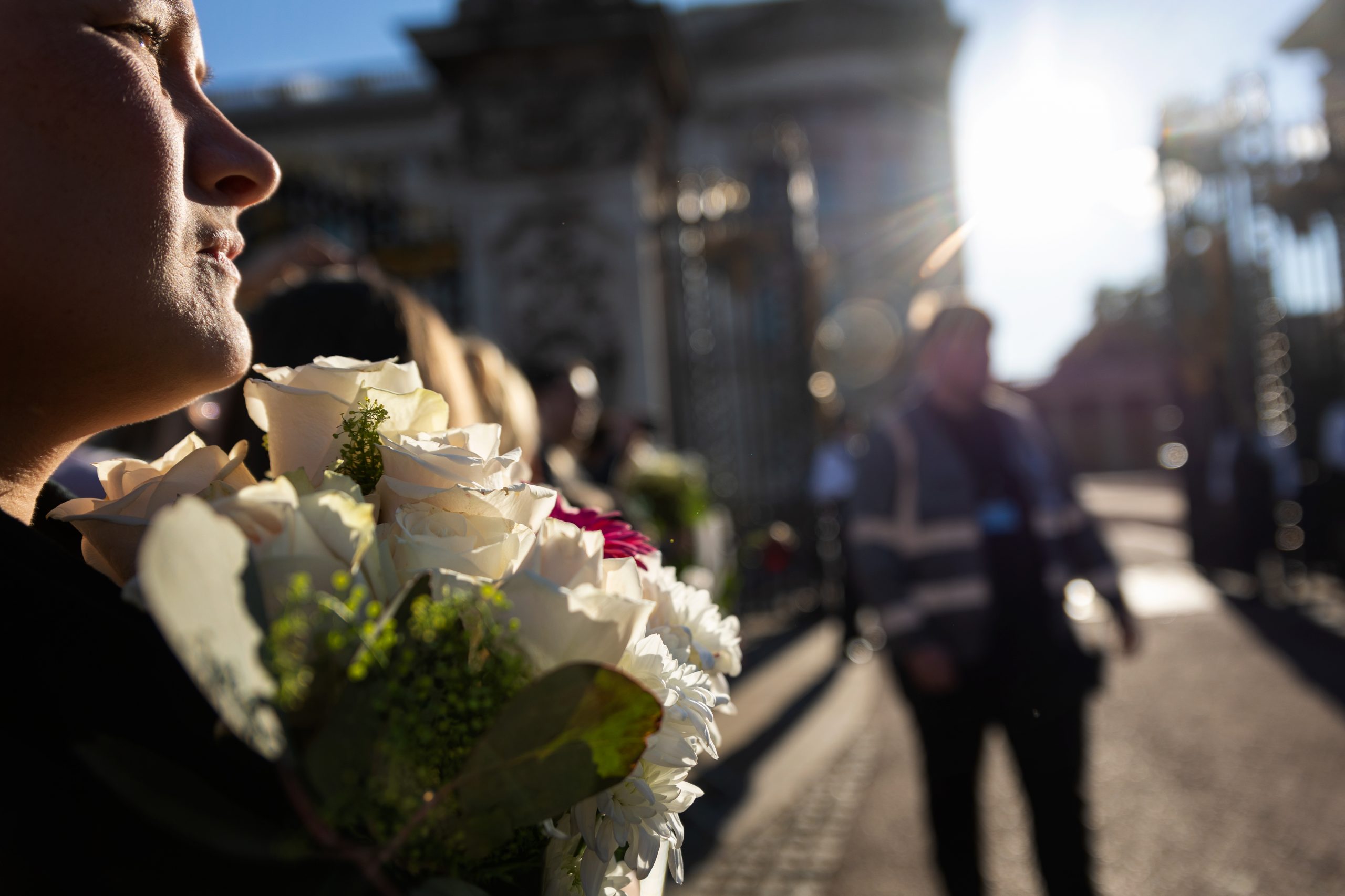
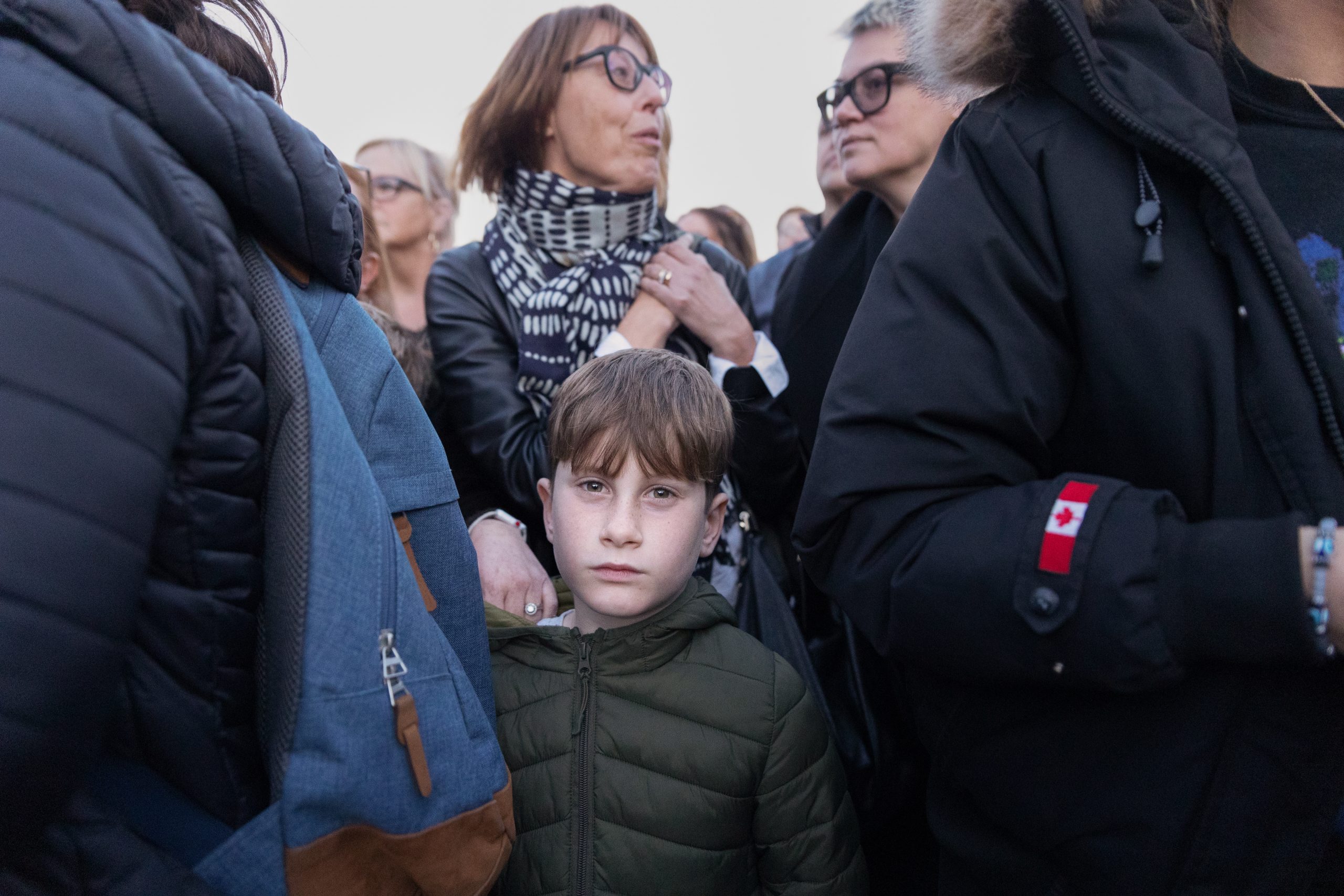












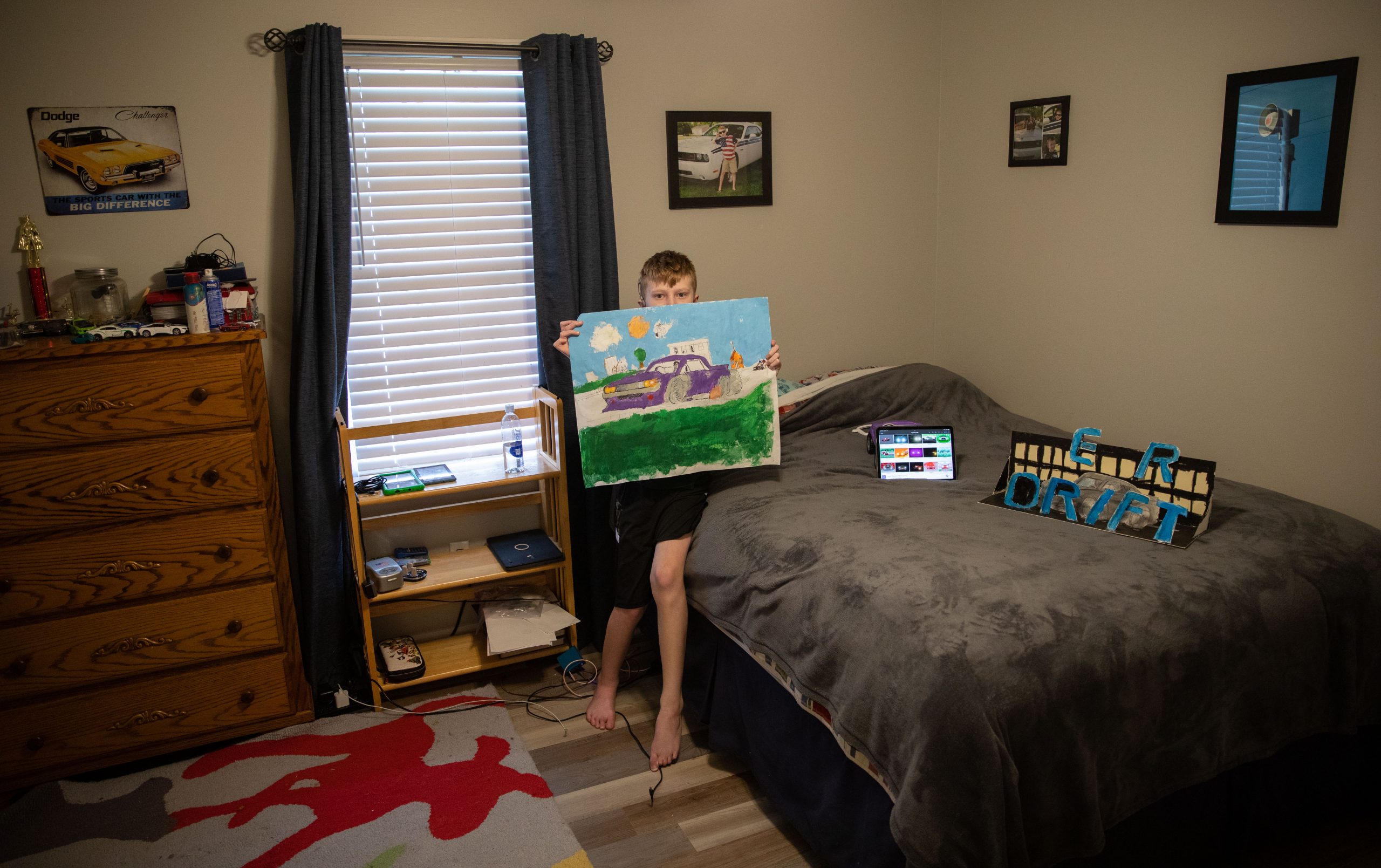
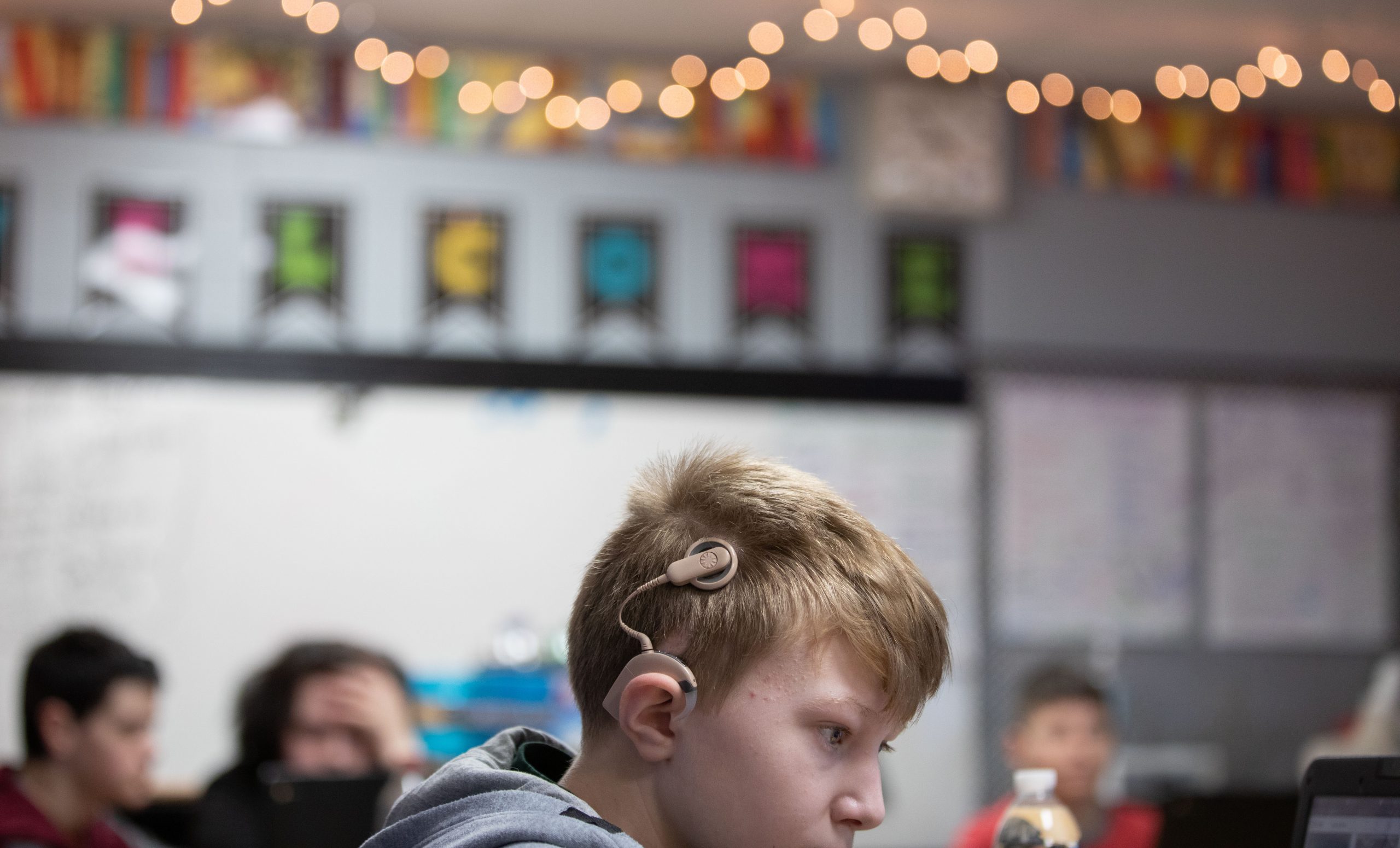
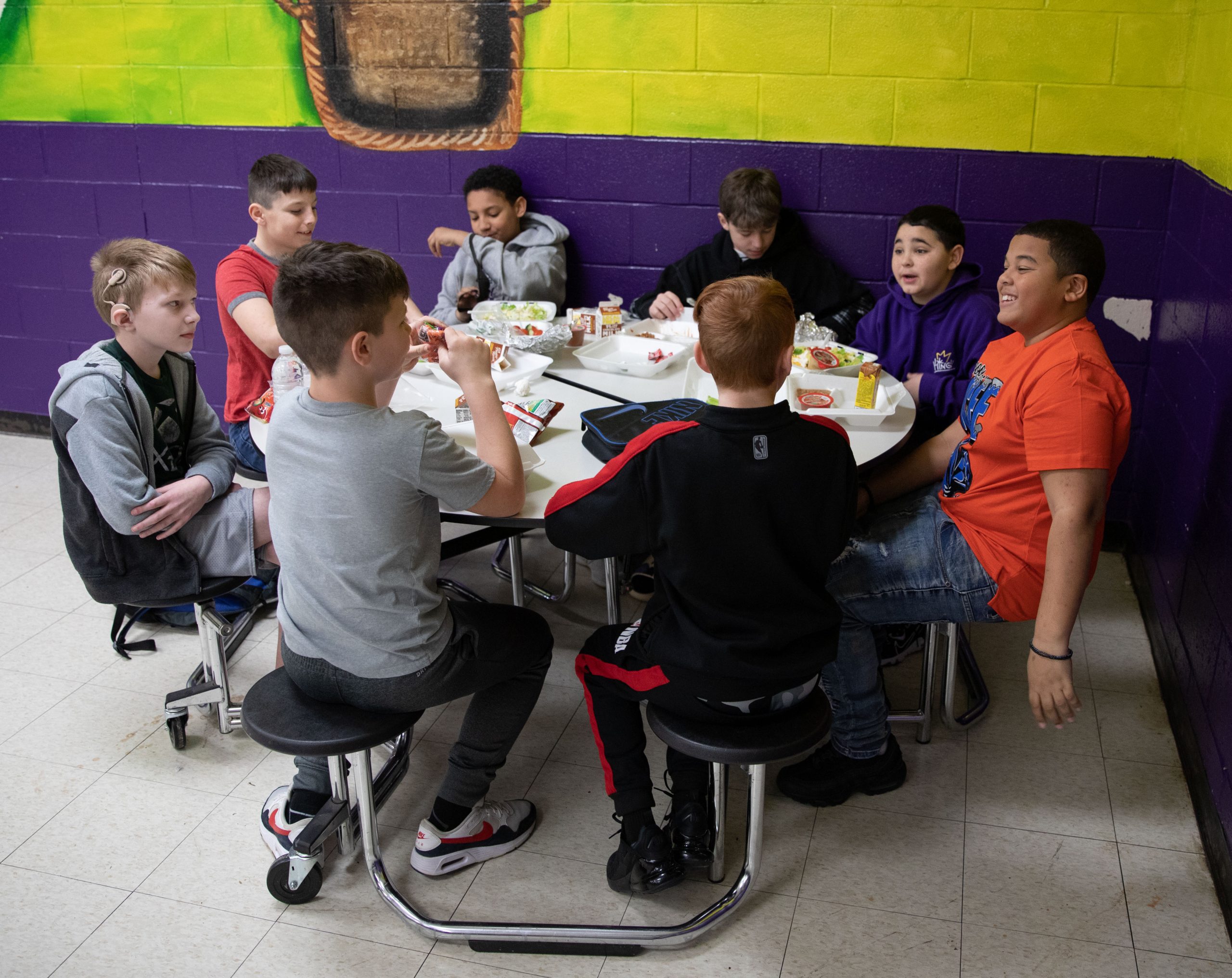
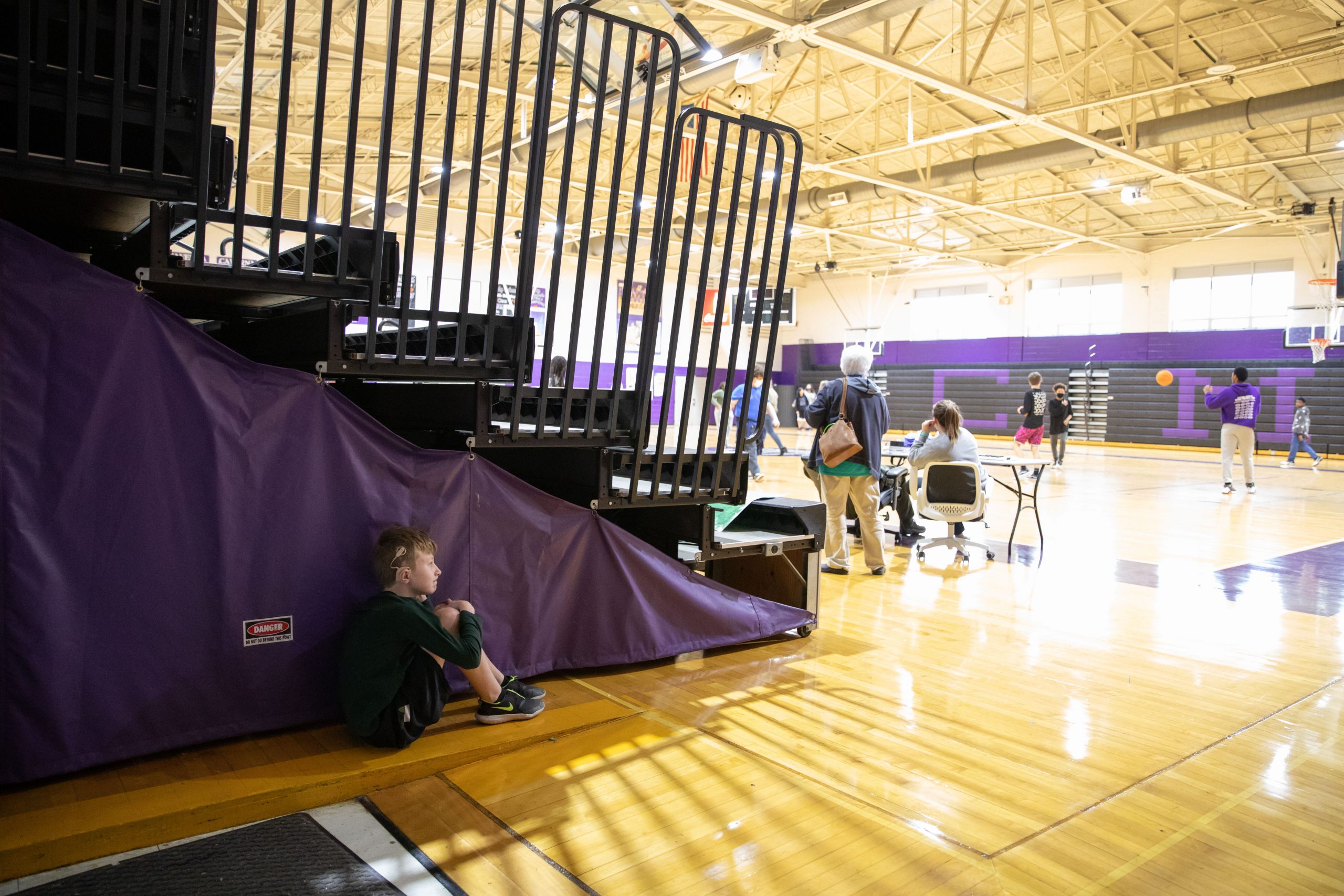
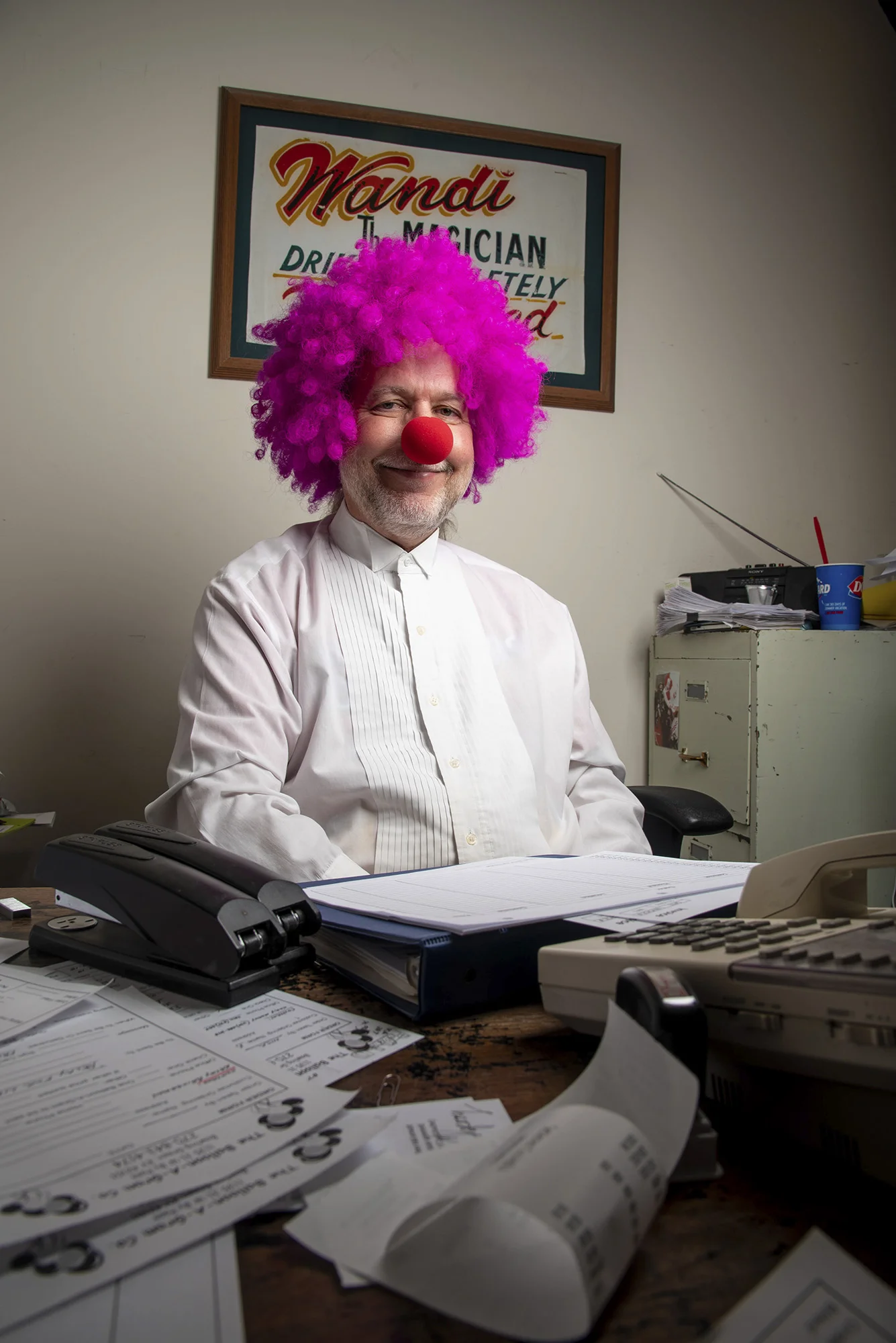
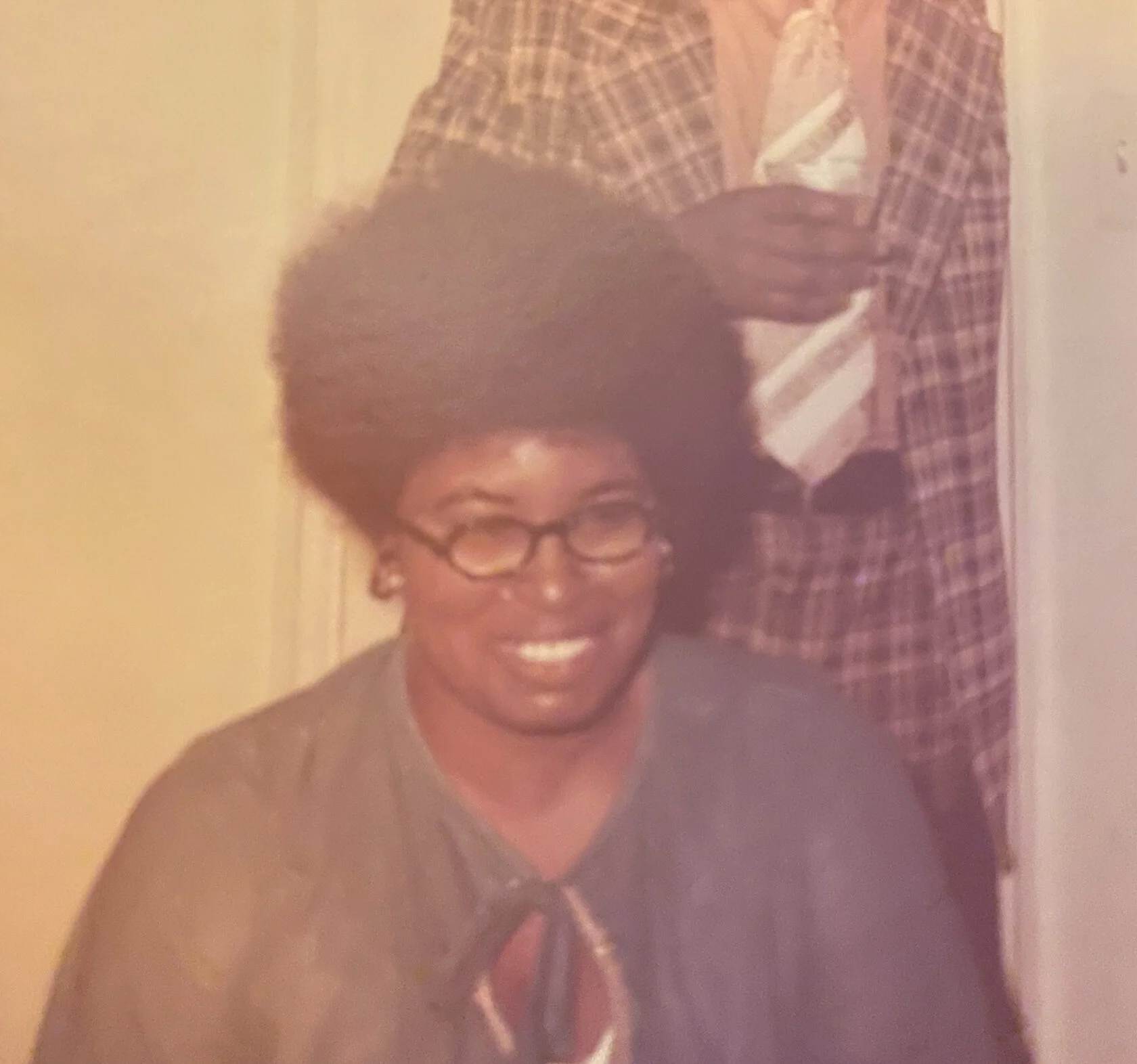
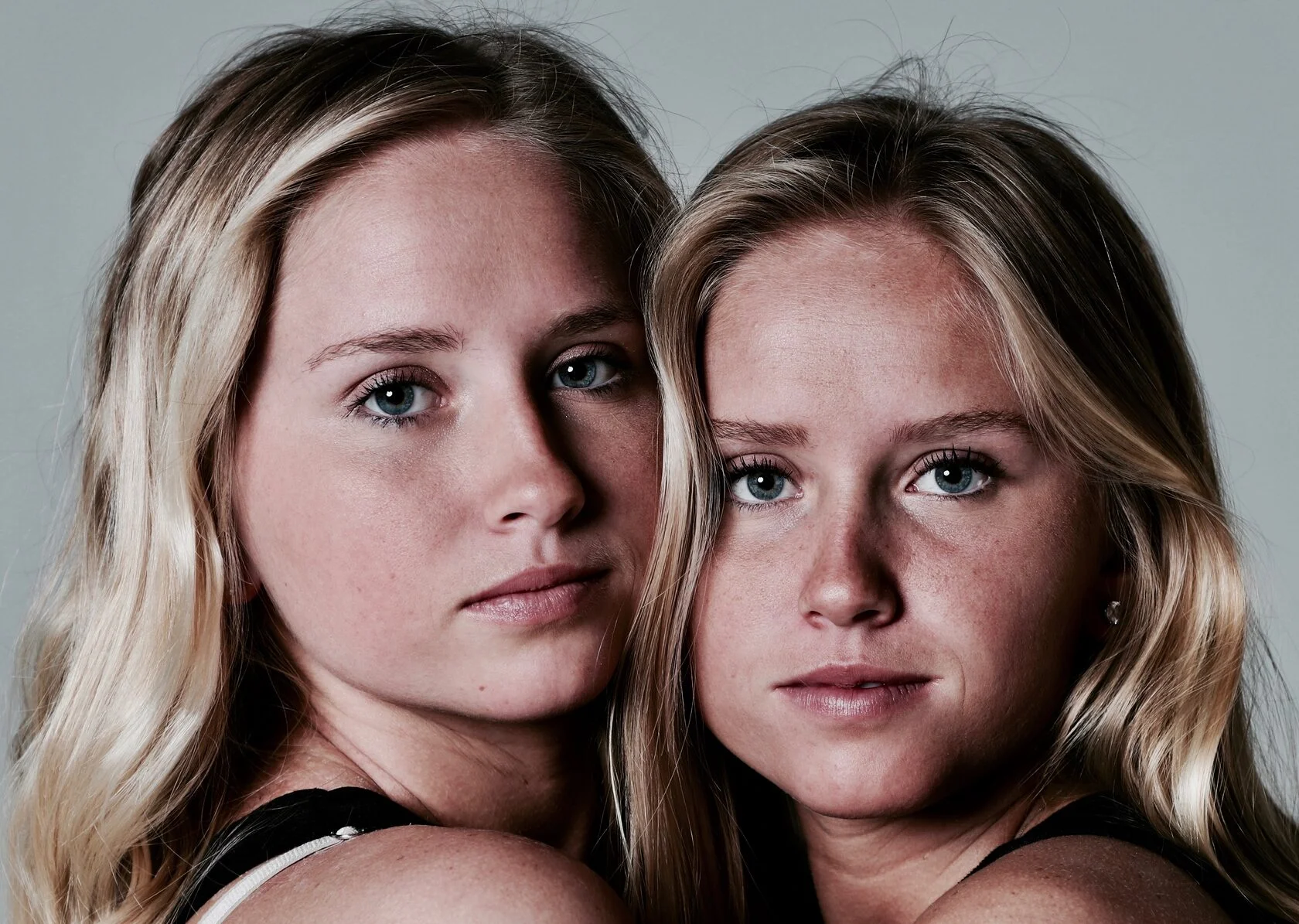 Annie and Abby Burd are 19-year-old identical twins from Bowling Green, Ky. They have grown up together and left their hometown together to attend the University of Alabama Huntsville on soccer scholarships. They are spending their last weekend together before Abby moves back home to Bowling Green, and Annie stays at school in pursuit of her soccer career and degree. This will be the first time in their lives that they will be living apart.
Annie and Abby Burd are 19-year-old identical twins from Bowling Green, Ky. They have grown up together and left their hometown together to attend the University of Alabama Huntsville on soccer scholarships. They are spending their last weekend together before Abby moves back home to Bowling Green, and Annie stays at school in pursuit of her soccer career and degree. This will be the first time in their lives that they will be living apart.